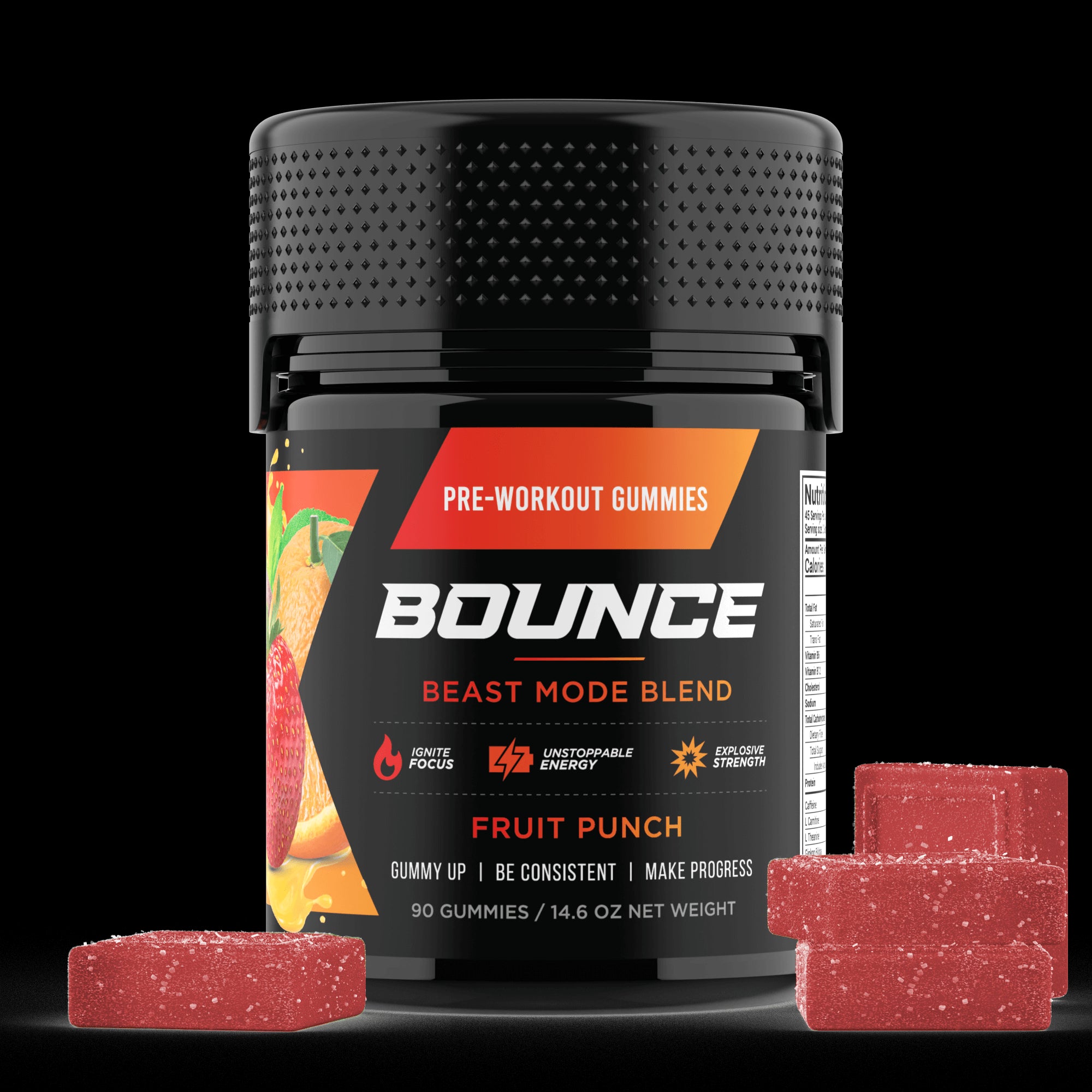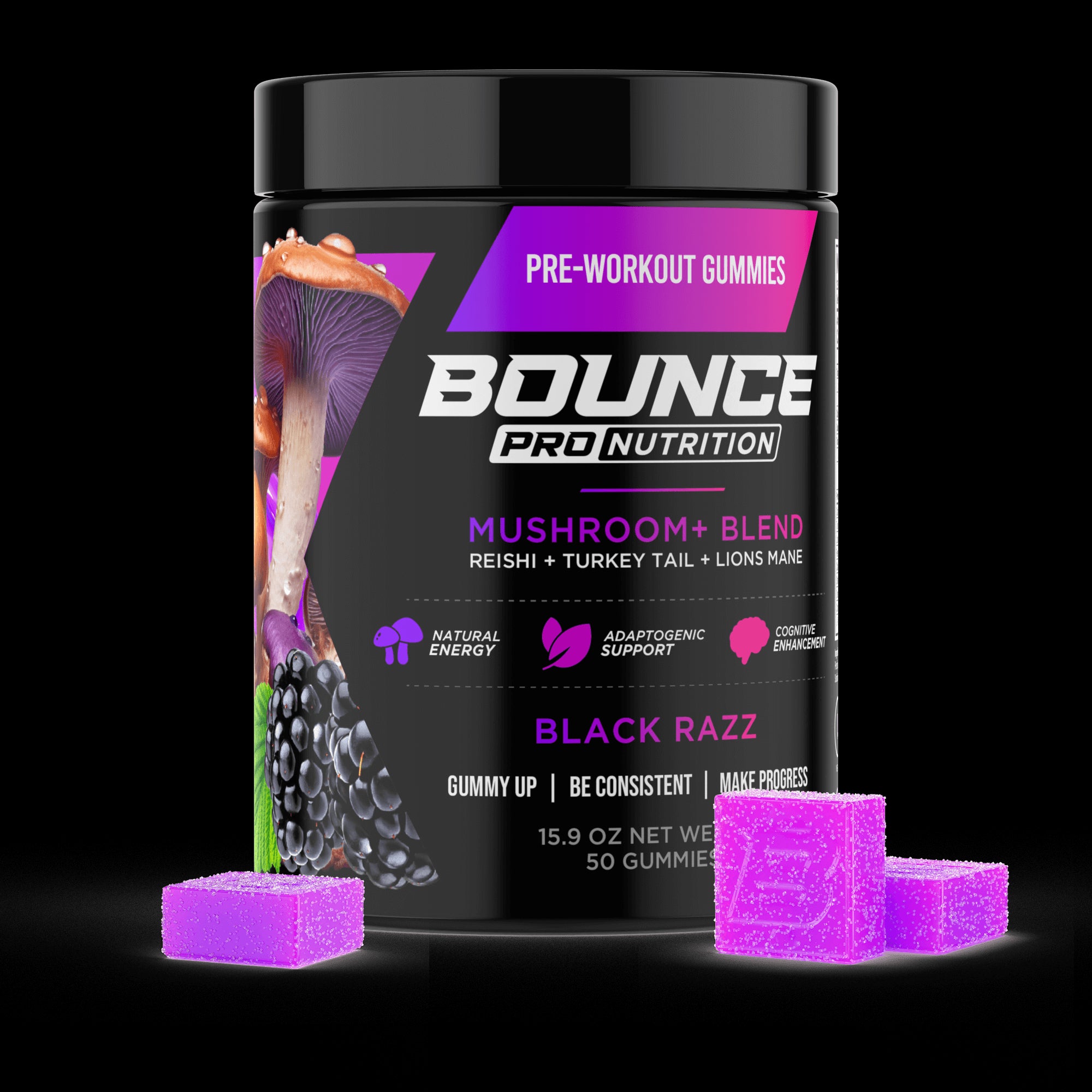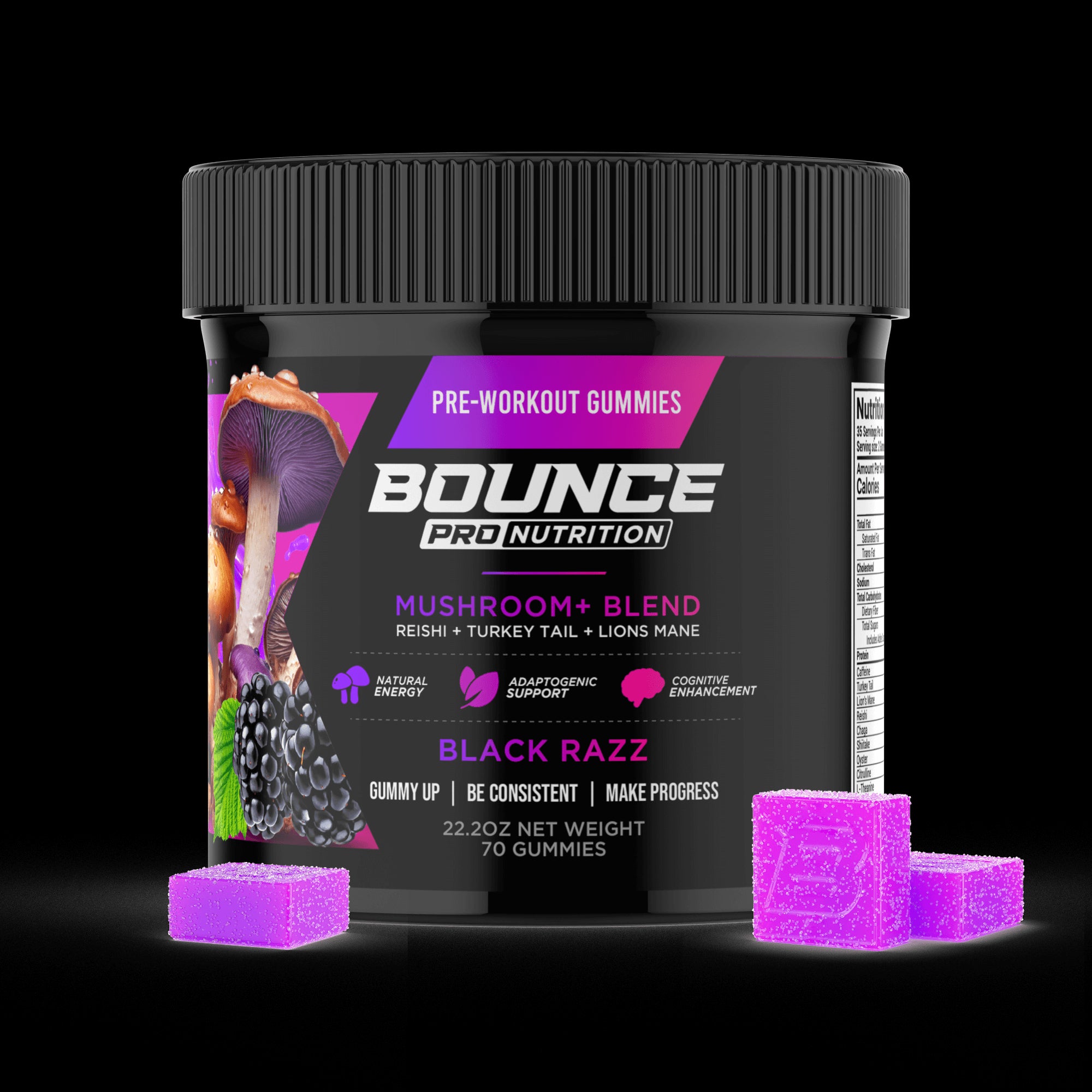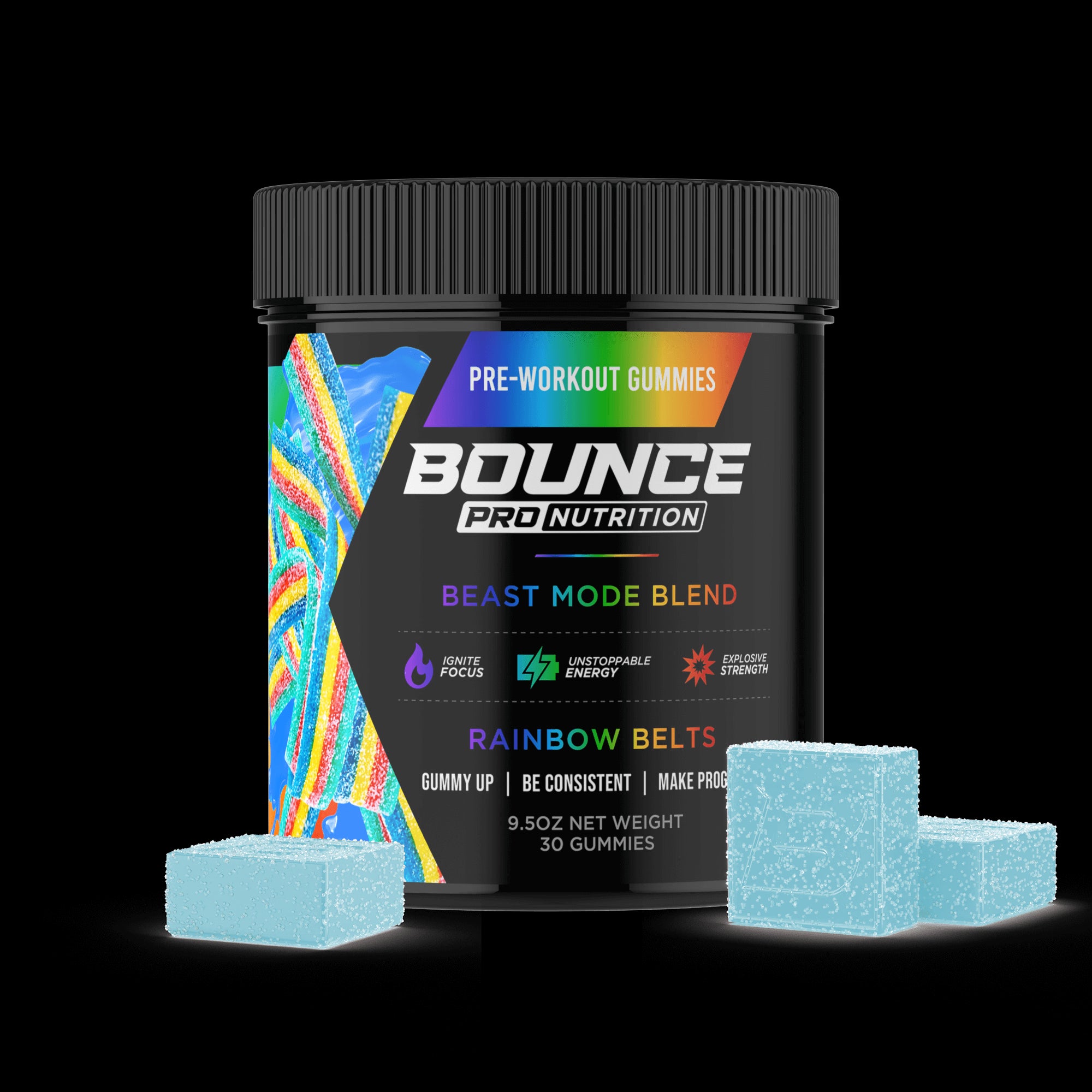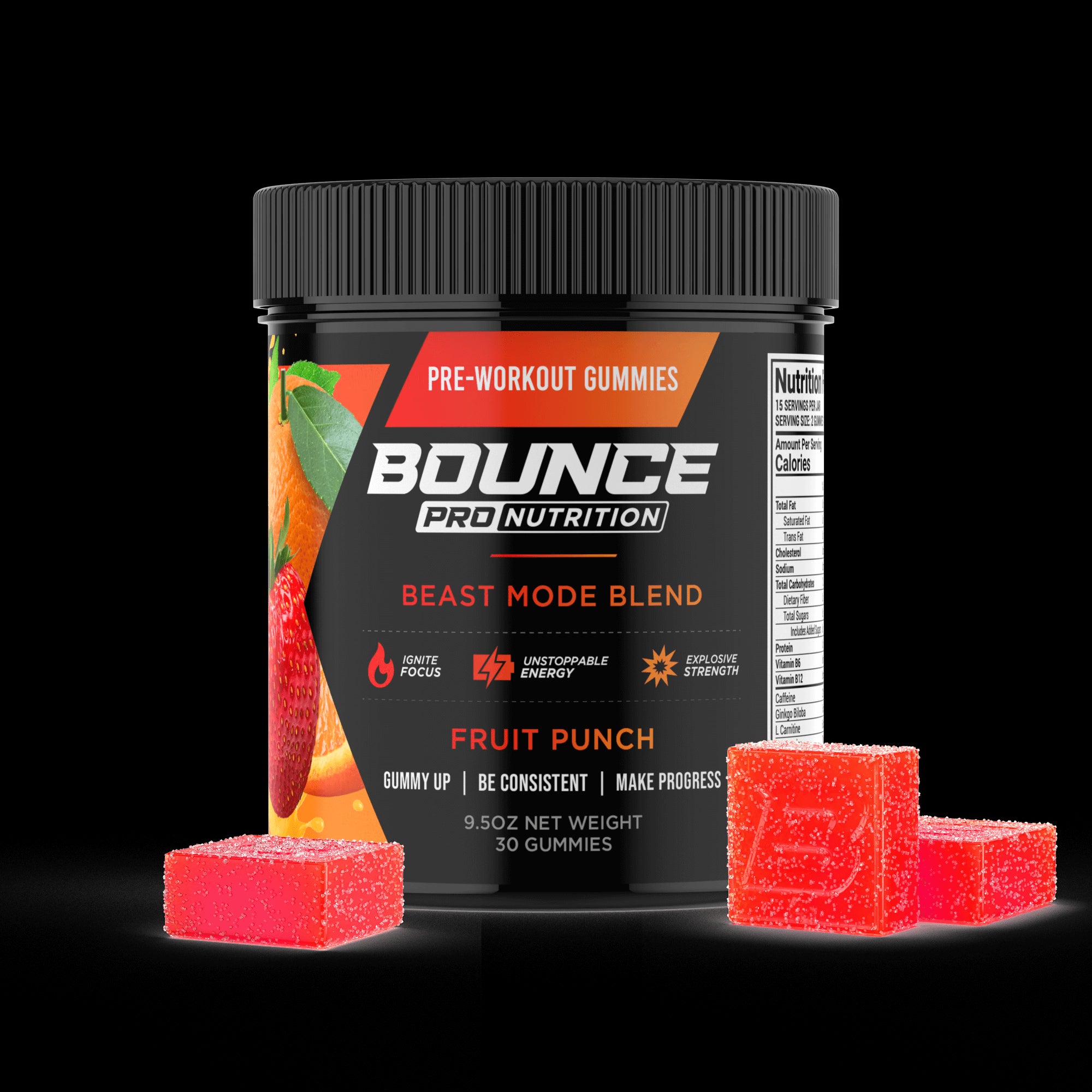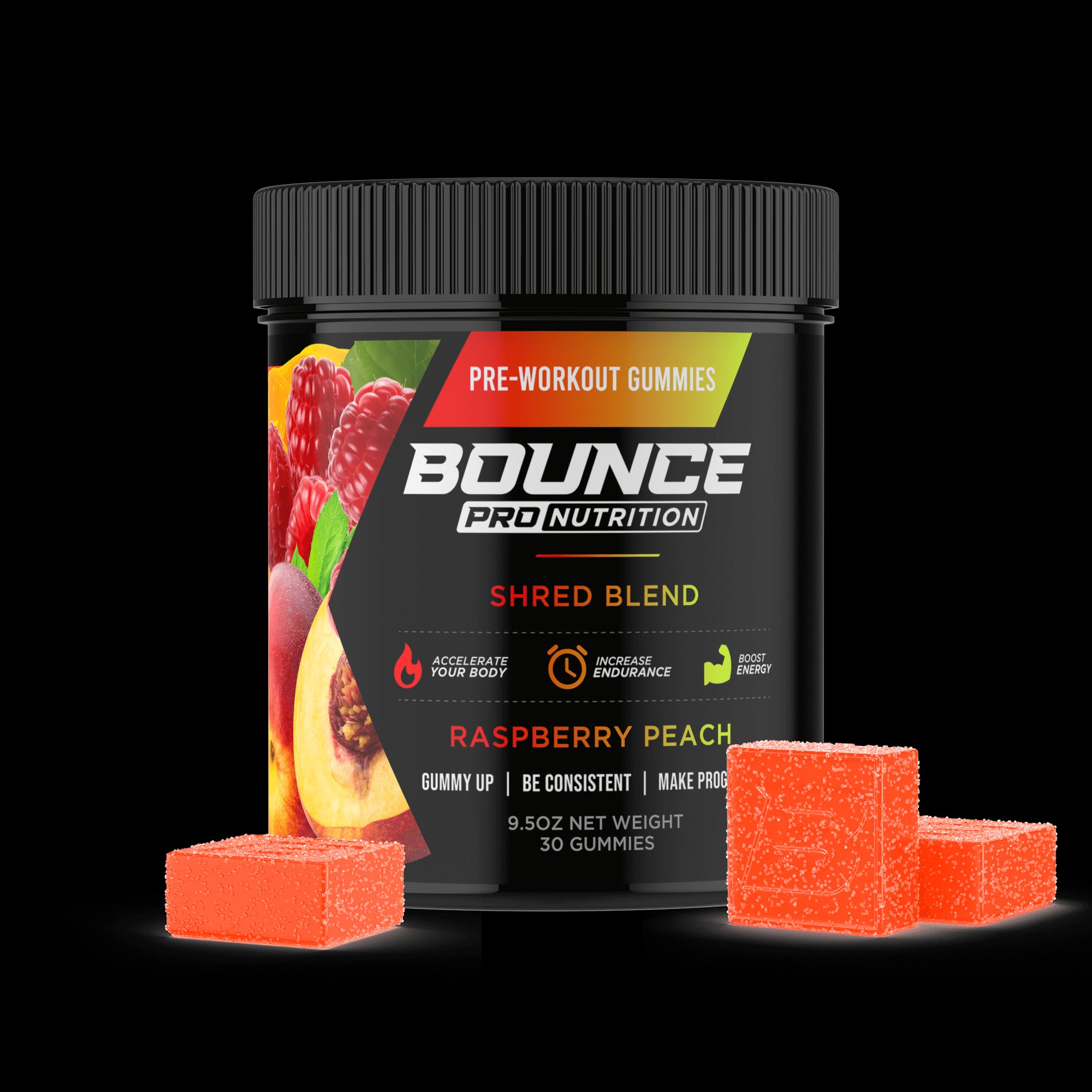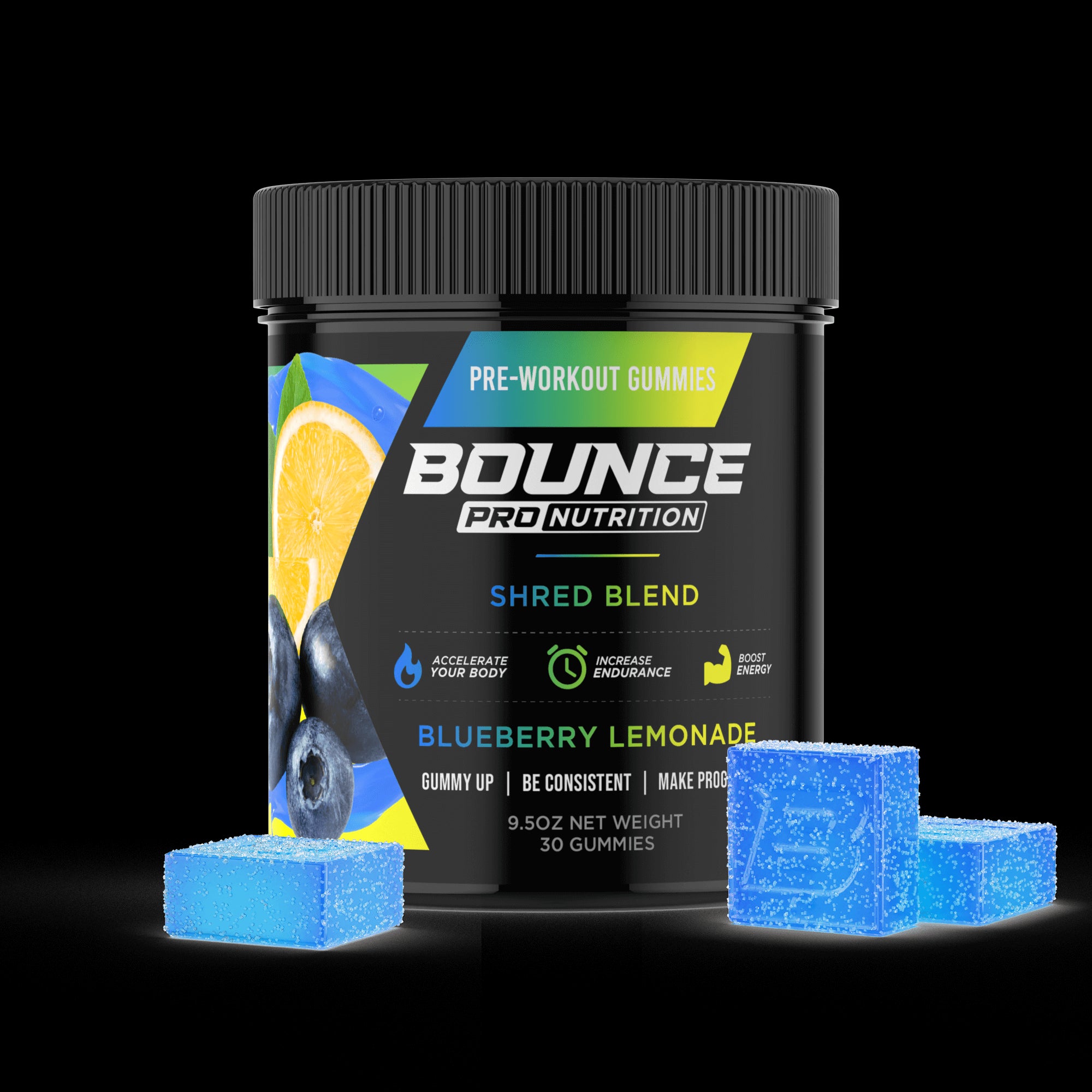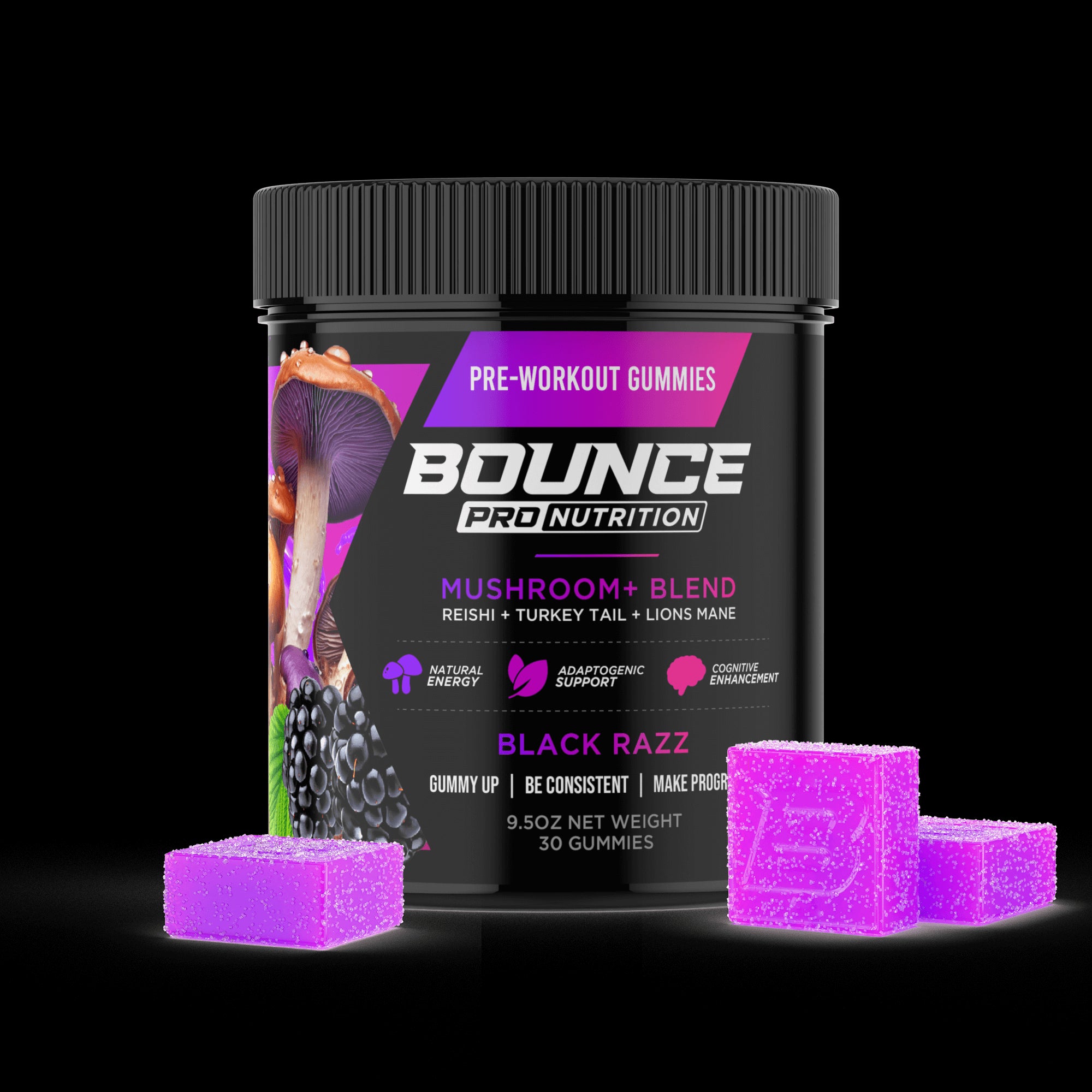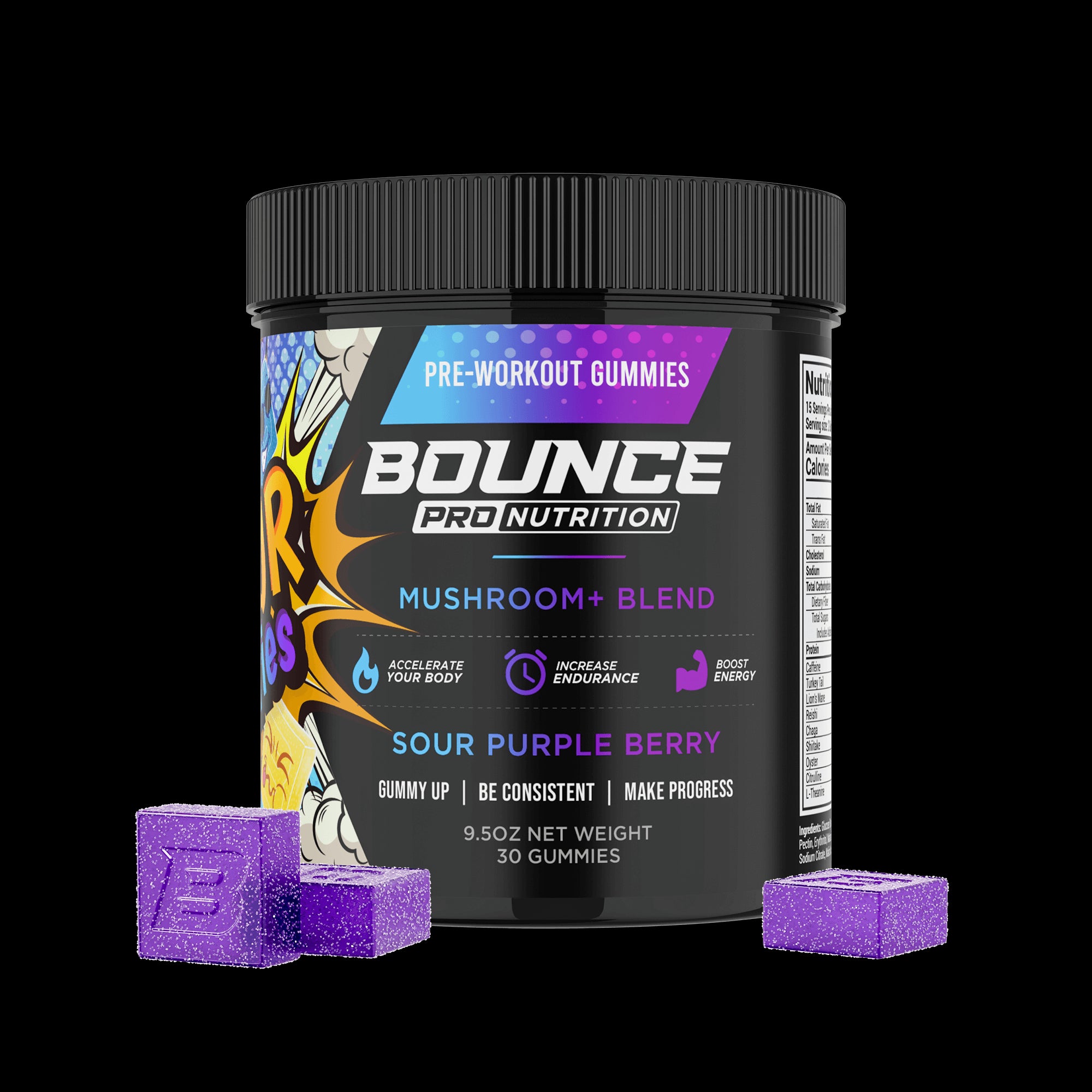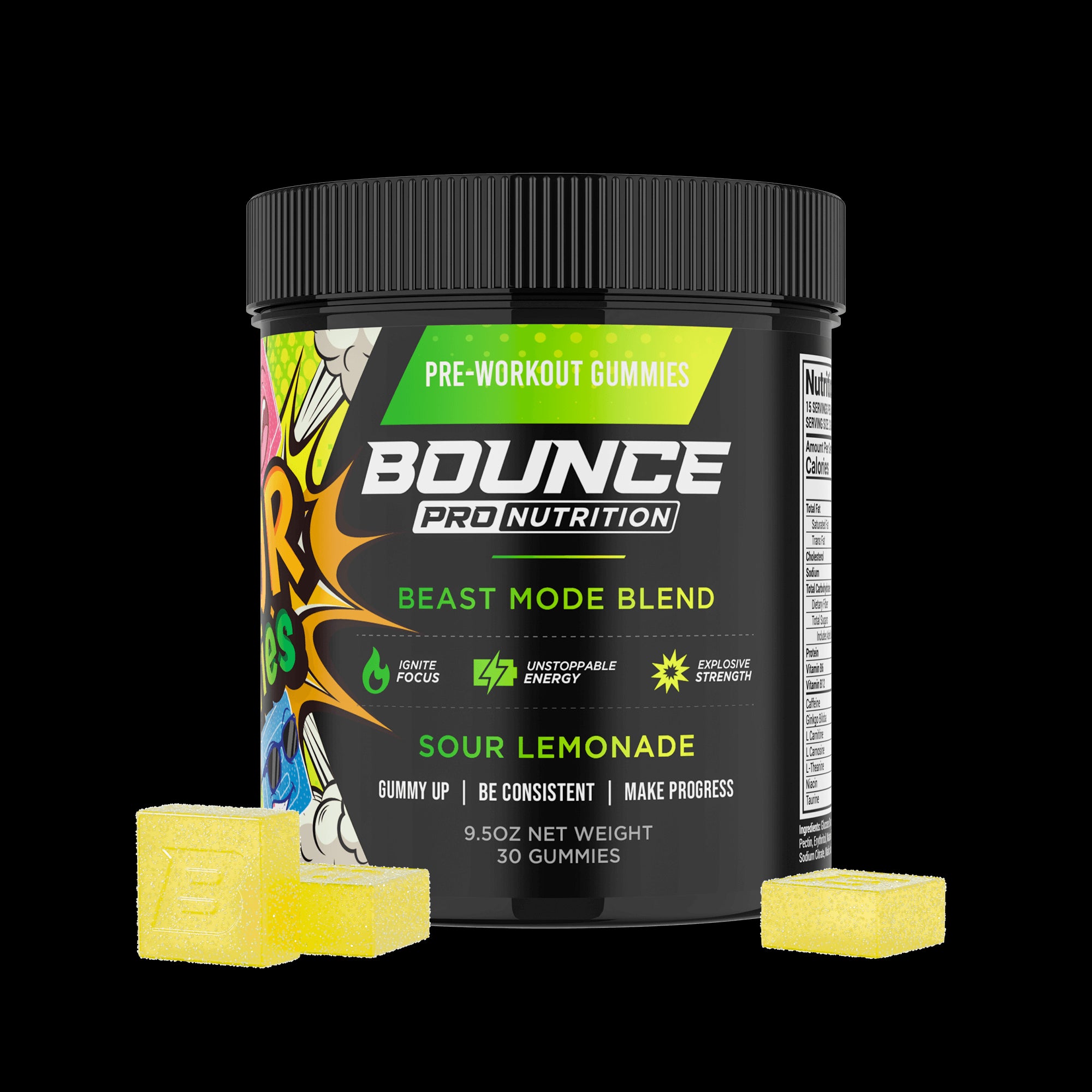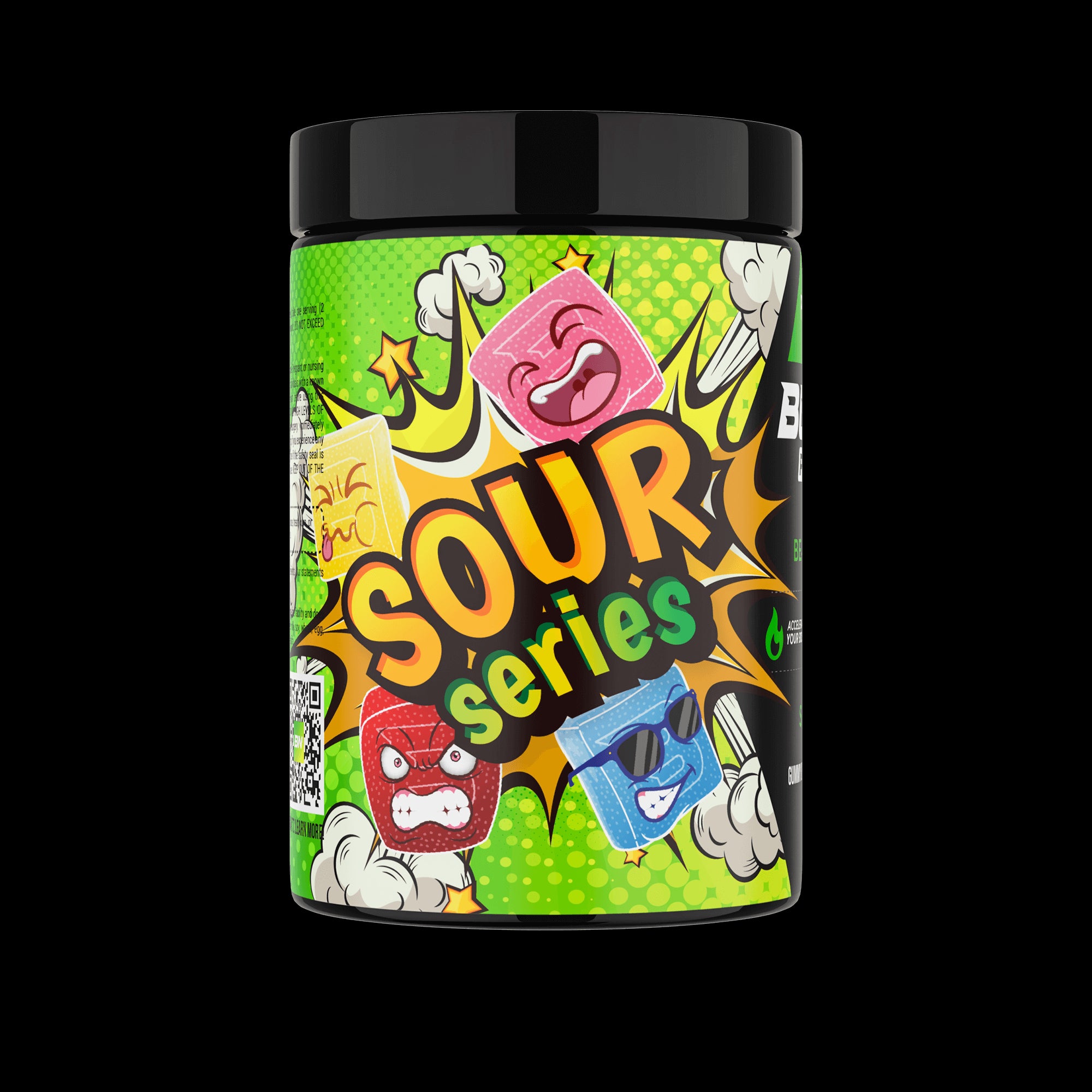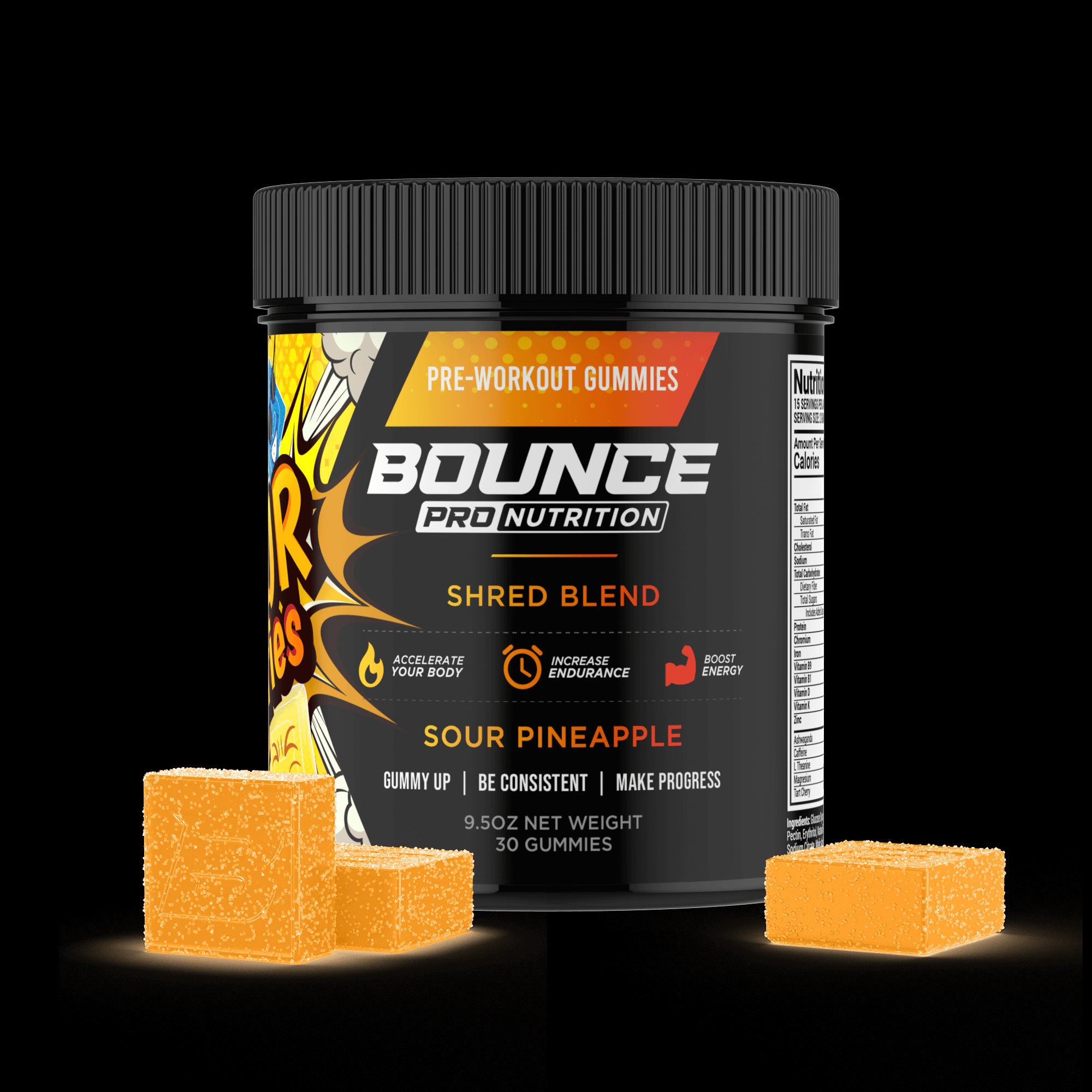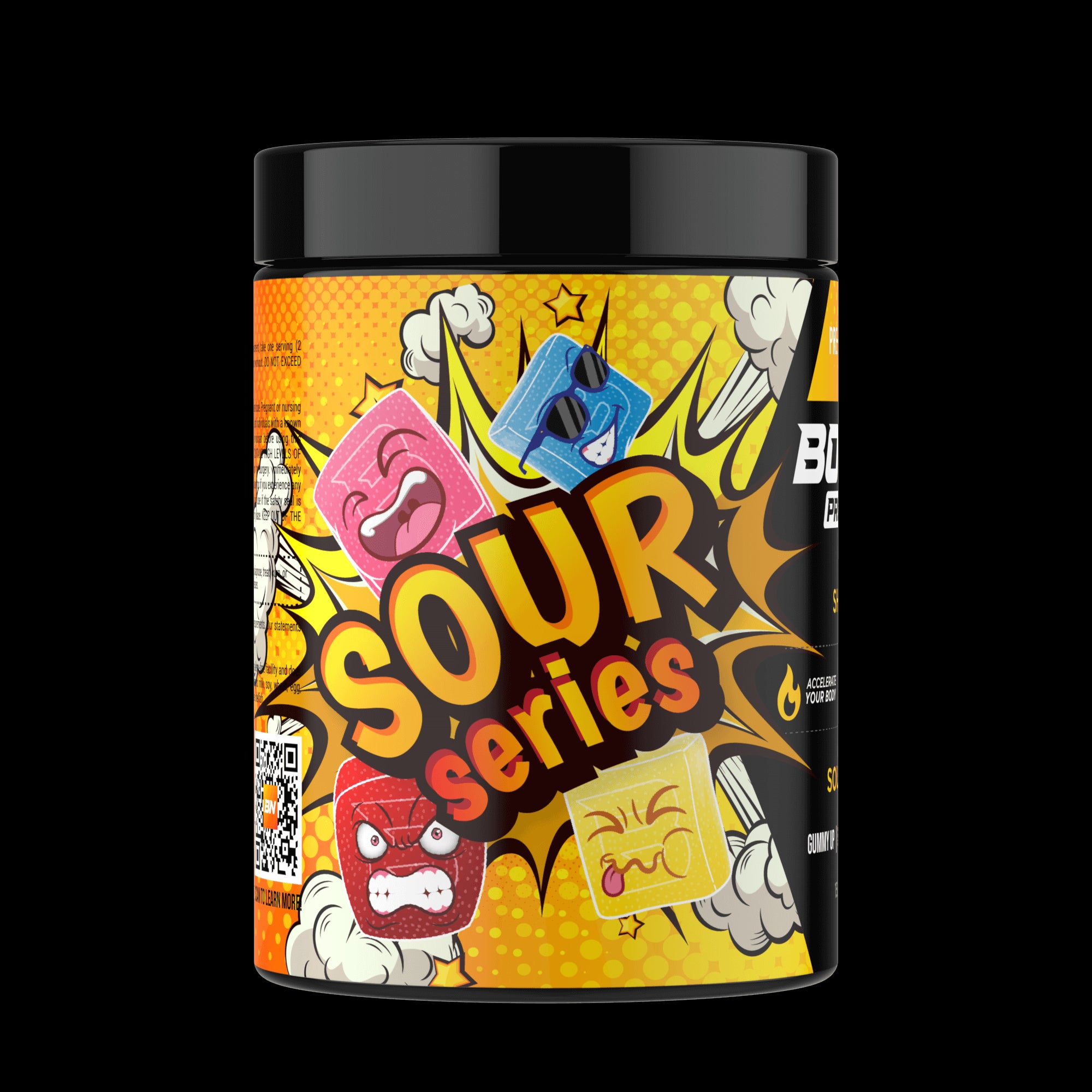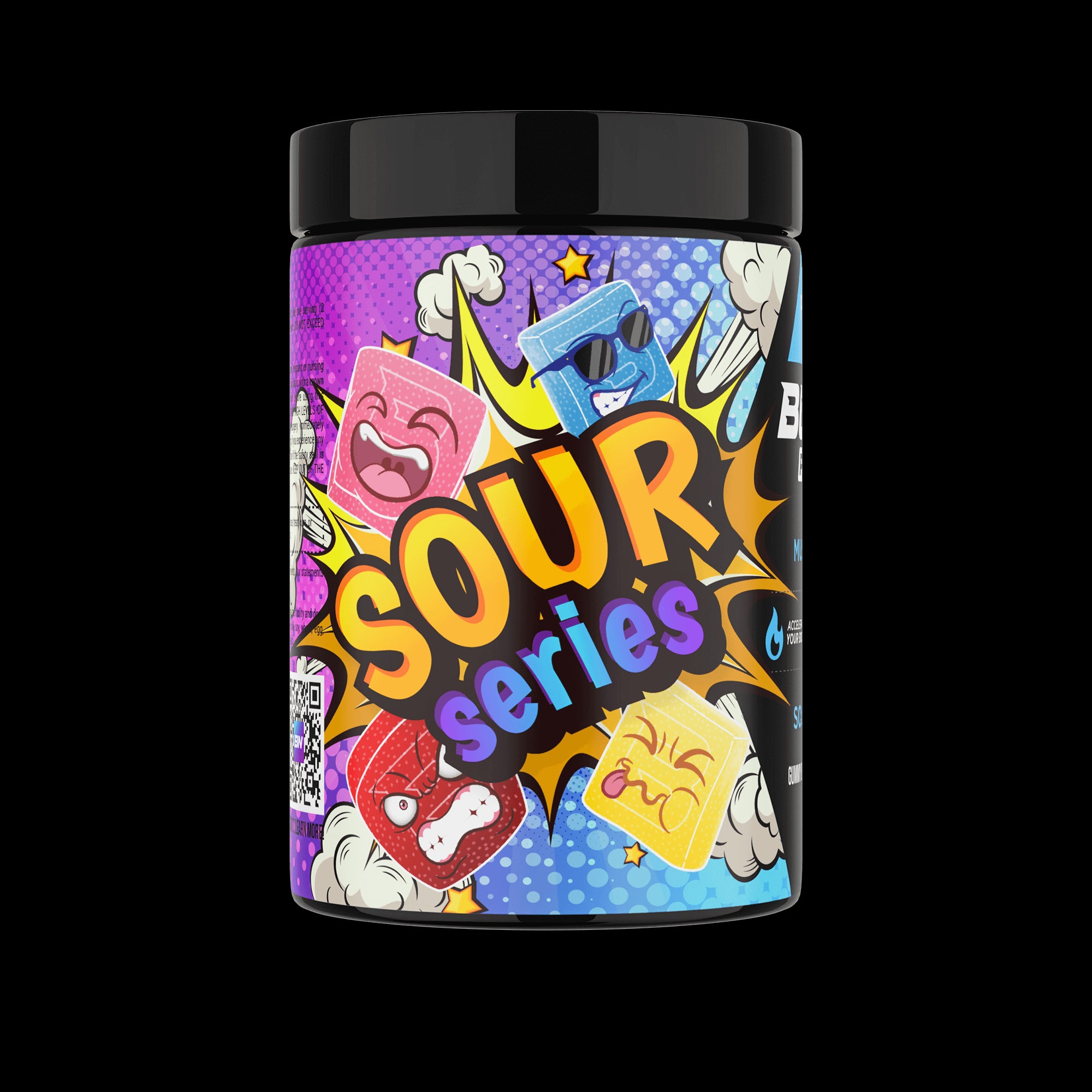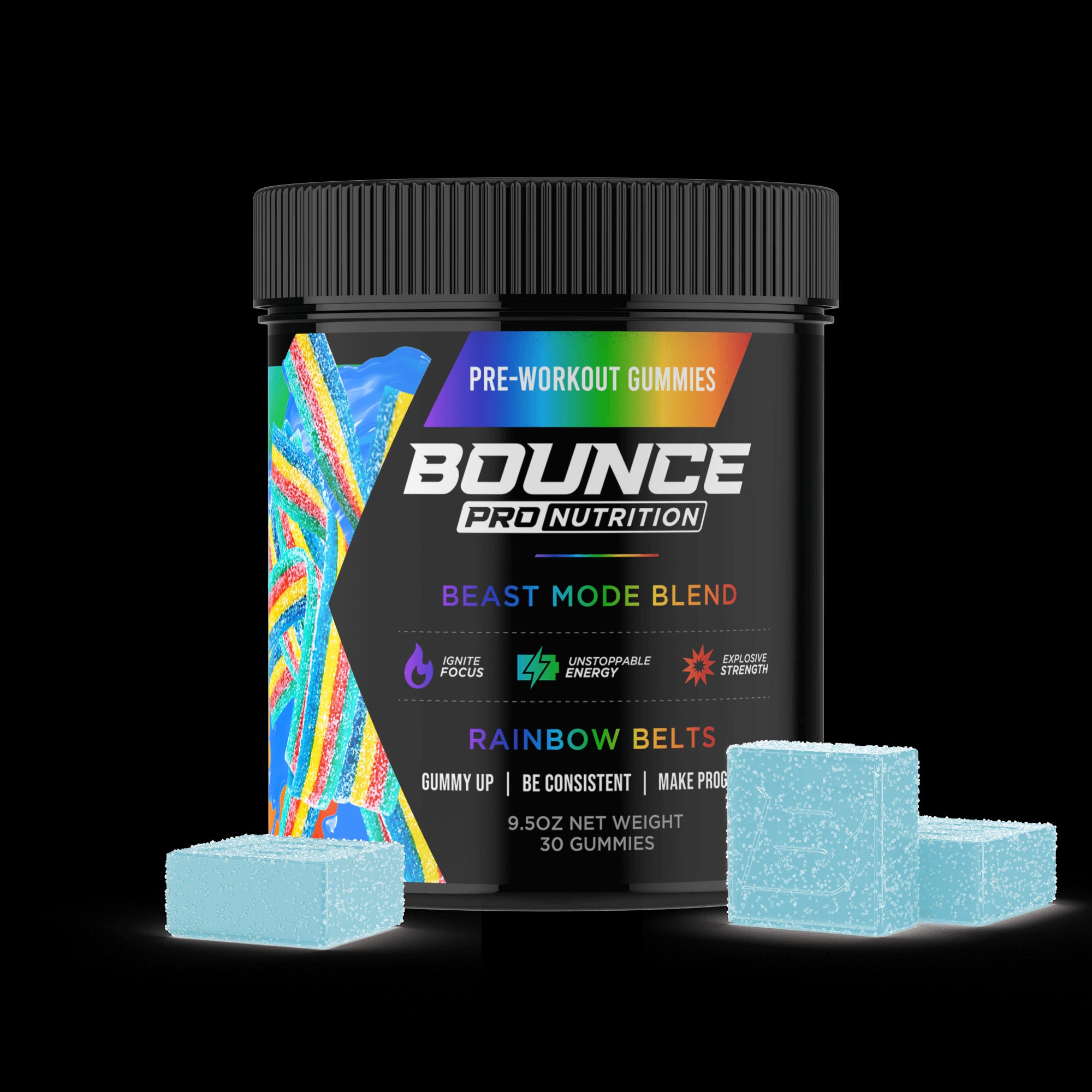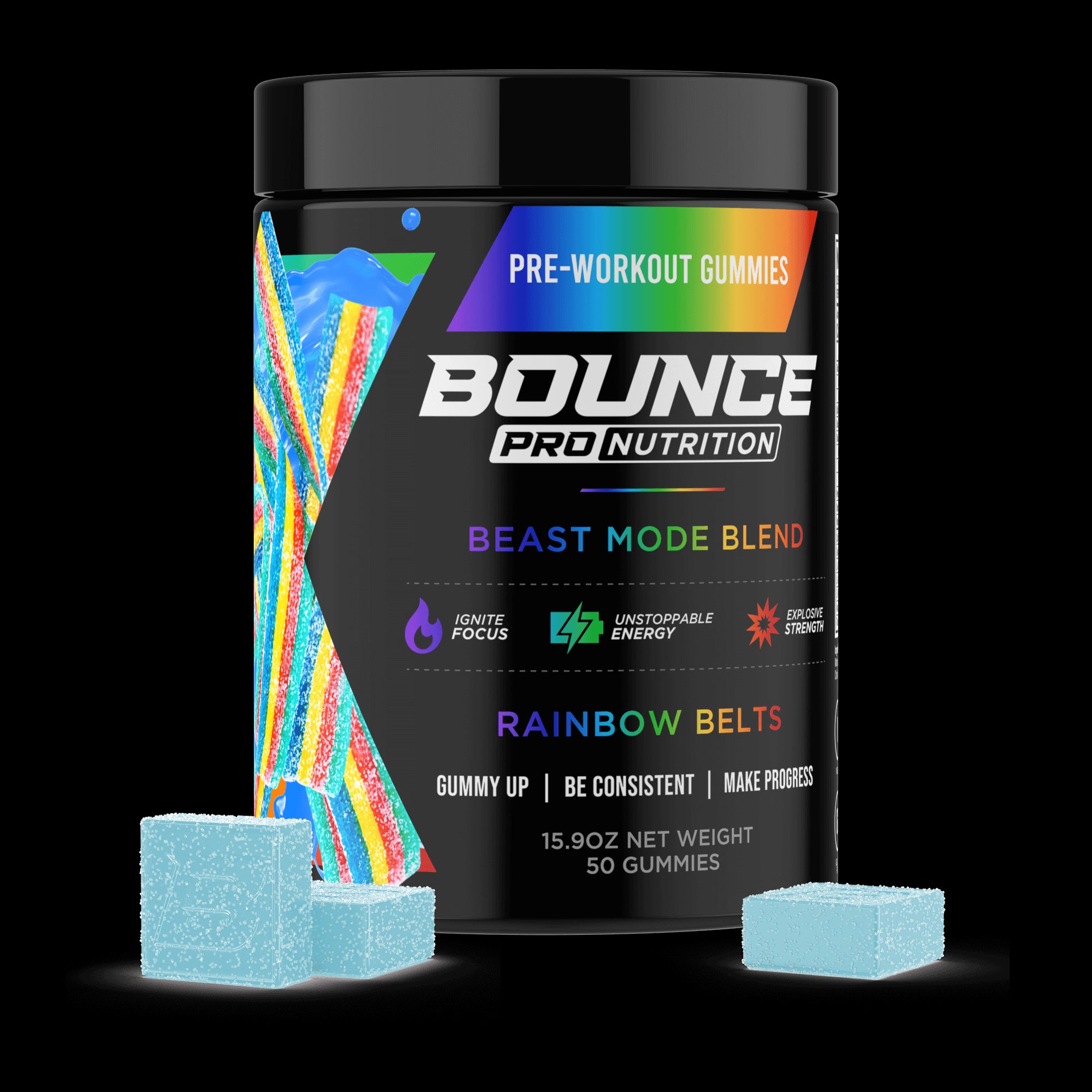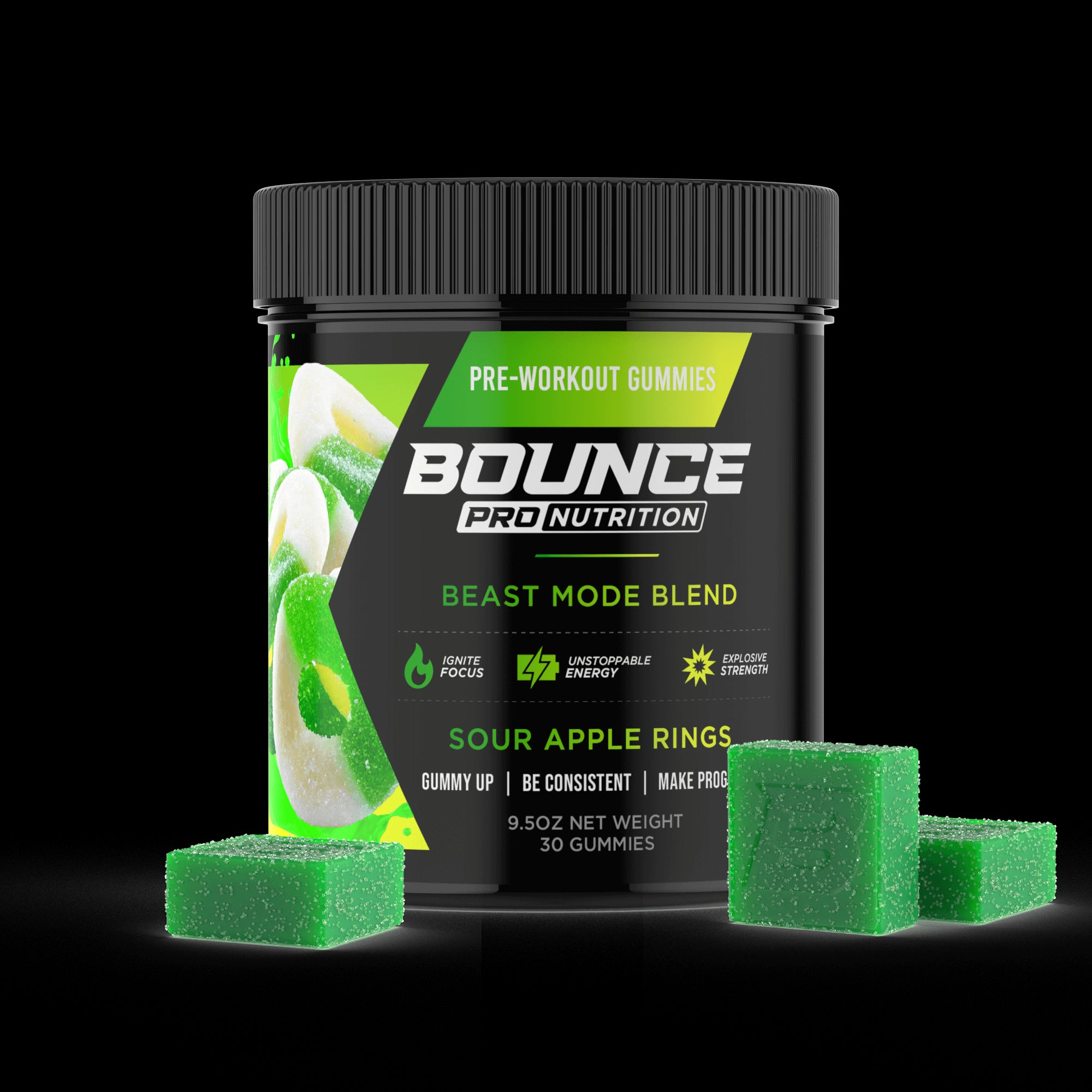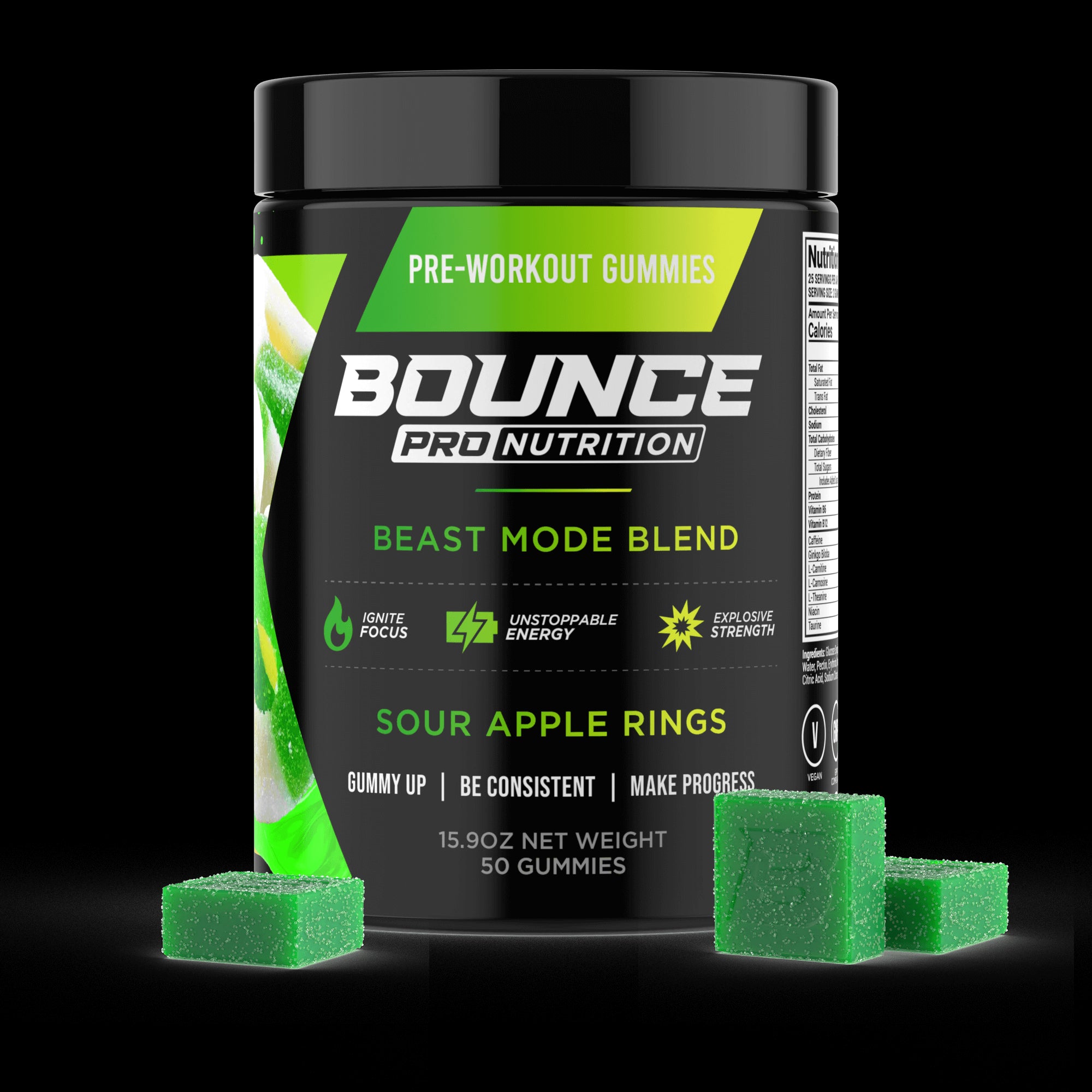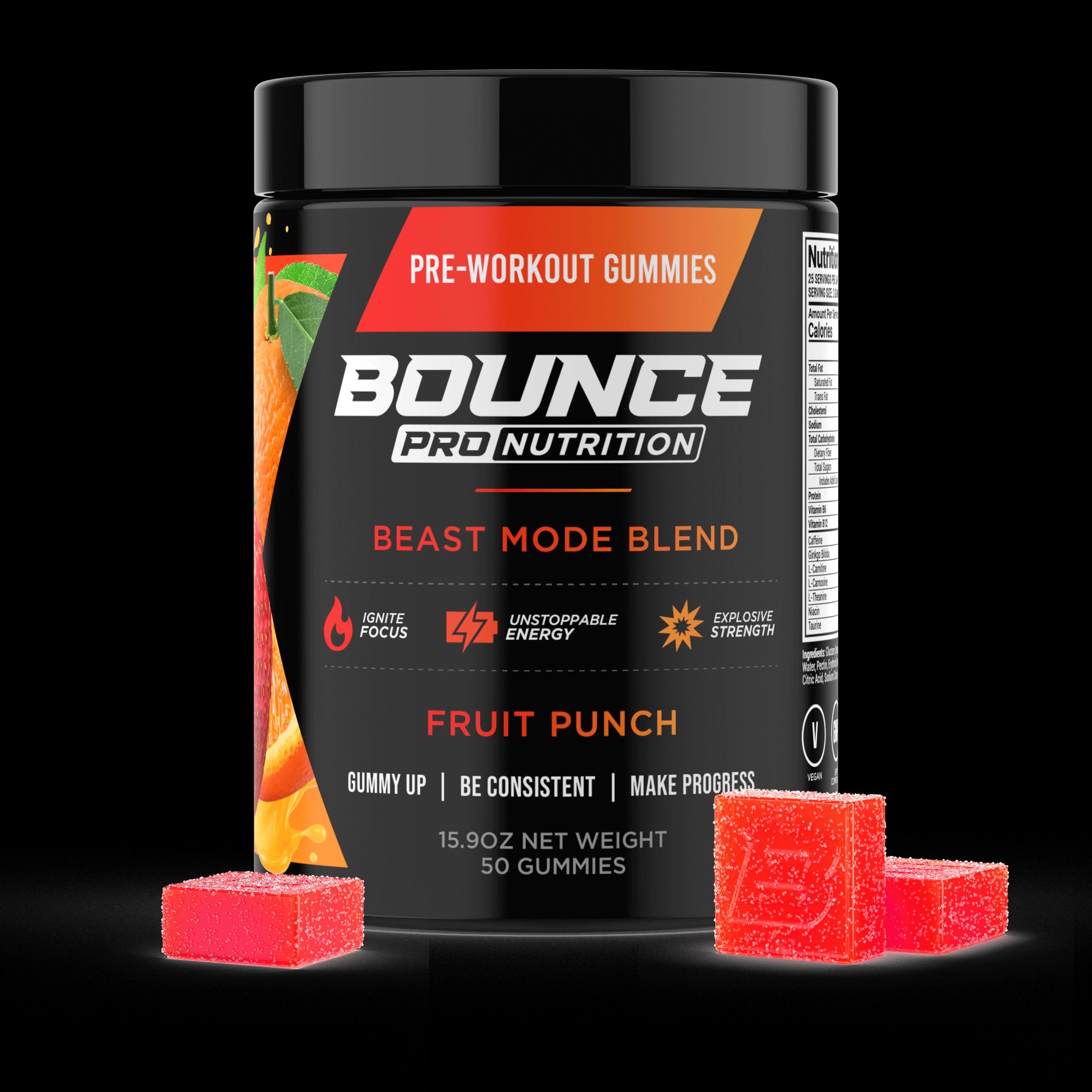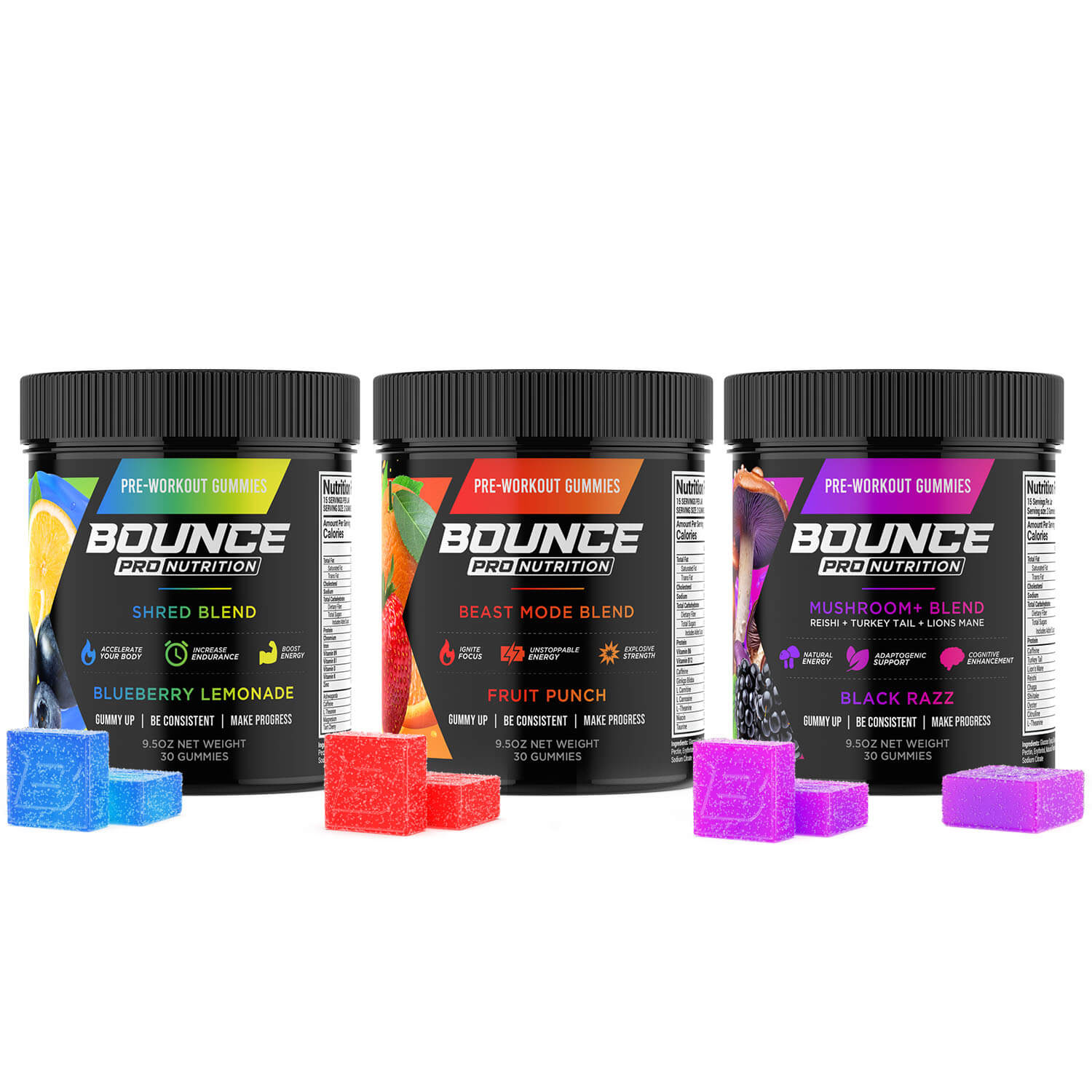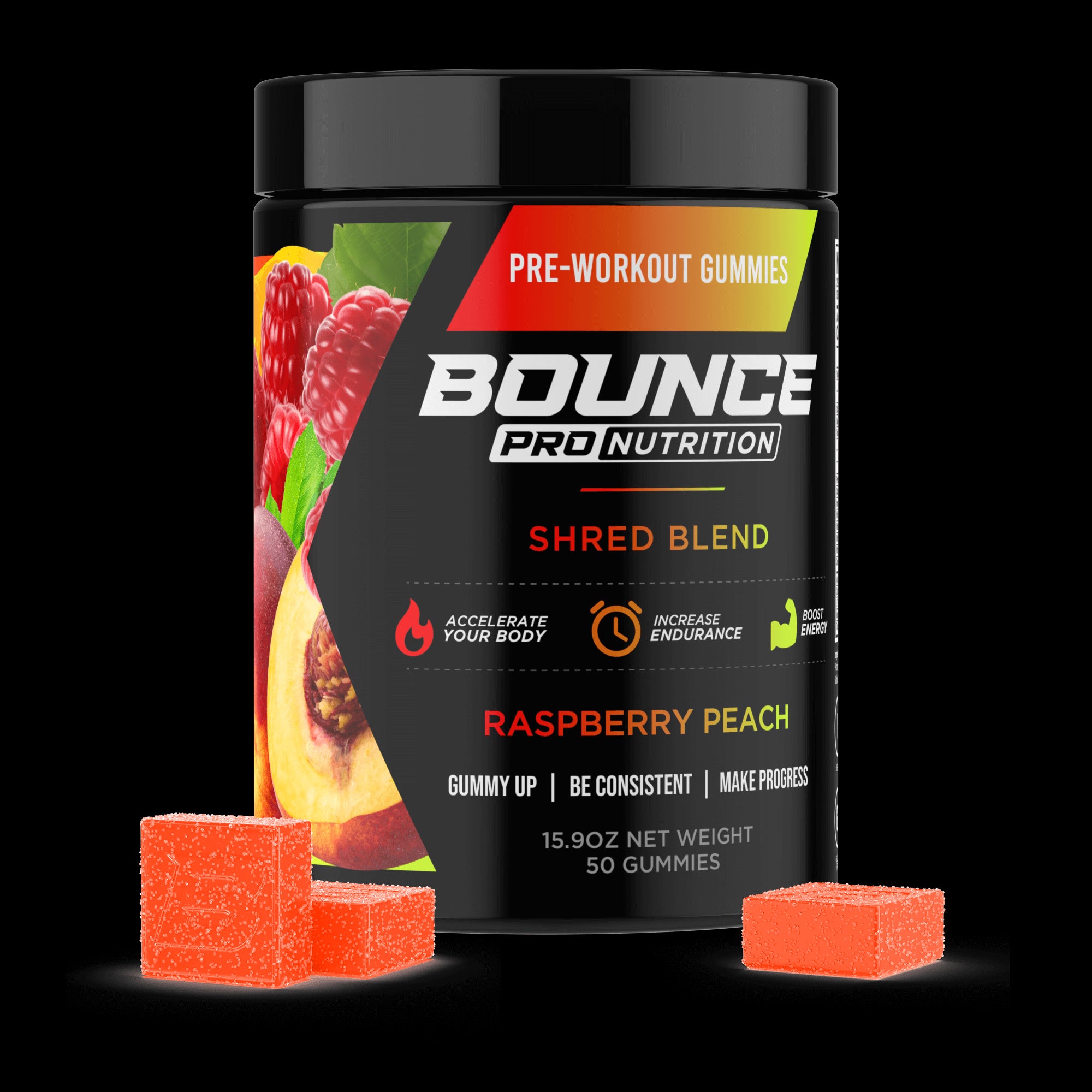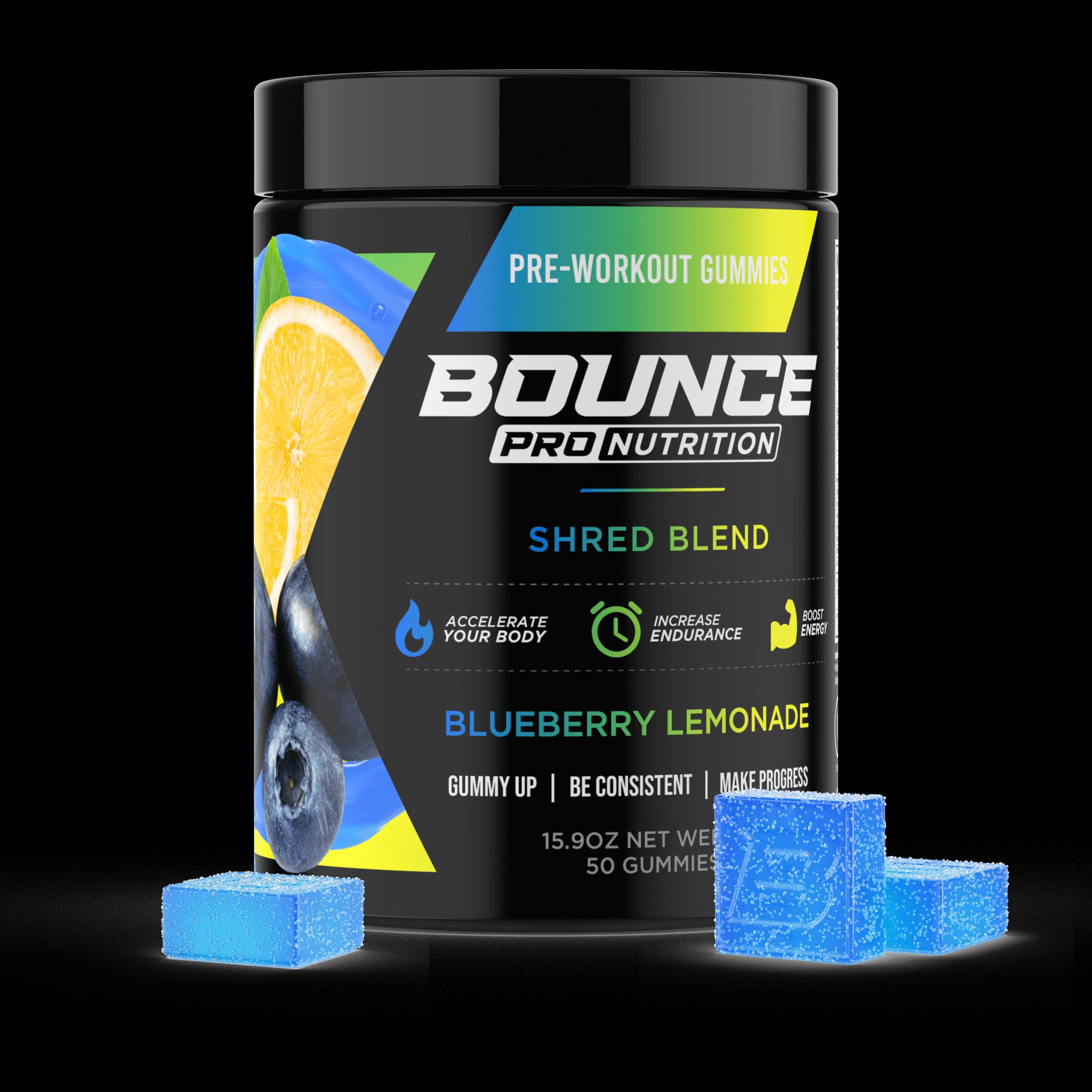Under the bright, unforgiving lights of the octagon, there exists a unique intersection of art, science, and raw human will. It is a space where a lifetime of discipline is distilled into moments of intense, explosive action, where a single, perfectly executed technique can end a contest in an instant.
This is the world of the mixed martial arts (MMA) fighter, a world where every physical and mental faculty is pushed to its absolute breaking point. The journey to that cage door is an arduous one, paved with thousands of hours of grueling training, meticulous planning, and unwavering dedication. But beyond the spectacular knockouts and intricate submissions lies a deeper, often unseen battle—the physiological war waged within the fighter's own body.
It is a constant struggle to fuel the engine, recover from immense damage, and maintain the delicate chemical balance that allows for peak performance. In this most demanding of athletic endeavors, where the margins are razor-thin, the science of nutrition and hydration is not just a component of success; it is a critical weapon in a fighter's arsenal.
TO BUY ELECTROLYTE GUMMIES CLICK HERE
What is MMA?
Mixed Martial Arts (MMA) is a full-contact combat sport of breathtaking complexity and depth, allowing a wide range of fighting techniques and skills from a blend of martial arts disciplines to be utilized in striking, grappling, and ground fighting. It is often described as the purest form of one-on-one competition, as it seeks to answer the age-old question of which martial art is most effective by essentially removing the stylistic limitations found in more traditional combat sports.
In an MMA contest, a boxer cannot rely solely on their punches, a wrestler cannot ignore the threat of kicks and submissions, and a jiu-jitsu practitioner must first navigate the dangerous world of stand-up striking to get the fight to their preferred domain. This integration of disciplines forces its practitioners to become the most well-rounded and adaptable combat athletes on the planet, proficient in all phases of a fight and capable of seamlessly transitioning between them.
The history of modern MMA is rich and varied, with roots in the brutal Vale Tudo ("anything goes") events in Brazil and the early mixed-style shoot fighting promotions in Japan, like Pancrase. However, it was the founding of the Ultimate Fighting Championship (UFC) in 1993 that brought the concept to the American mainstream. The early UFC events were raw, stylistic clashes designed to pit practitioners of different martial arts against each other with very few rules.
A karate master might face a sumo wrestler, or a kickboxer might fight a jiu-jitsu expert. These early contests famously showcased the dominance of the grappling arts, particularly Brazilian Jiu-Jitsu, as personified by the legendary Royce Gracie. This revelation forced martial artists everywhere to re-evaluate their training, realizing that to be a complete fighter, they could no longer afford to specialize in just one area. This sparked the evolution from a clash of styles to a blending of styles, giving birth to the modern MMA fighter.
An MMA fight can be conceptually broken down into three distinct phases or domains of combat, and a proficient fighter must be comfortable and capable in all of them. The first is the stand-up phase, where fighters are on their feet and engaging in striking. This realm includes techniques from boxing (punches, head movement, footwork), Muay Thai (kicks, knees, elbows, and the clinch), and karate or taekwondo (a wider variety of kicks).
The second phase is the clinch, a close-quarters grappling battle that occurs when fighters tie up against the cage or in the center of the octagon. Here, fighters use techniques from wrestling and judo to control their opponent, land short strikes, or work to secure a takedown. The third and final phase is the ground game, which begins once a fighter is taken down to the mat.
This is the world of Brazilian Jiu-Jitsu and submission wrestling, where athletes fight for dominant positions, apply ground-and-pound (strikes on the ground), and hunt for fight-ending submission holds like chokeholds and joint locks. The objective in an MMA contest is to defeat an opponent in one of several possible ways, all governed by a comprehensive set of regulations known as the Unified Rules of Mixed Martial Arts.
The most decisive and spectacular way to win is by knockout (KO), where a fighter is rendered unconscious by a legal strike, or by technical knockout (TKO), where the referee steps in to stop the fight because a fighter is no longer intelligently defending themselves from strikes. Another definitive path to victory is by submission, where a fighter physically taps their opponent or the mat, or verbally submits, to signal that they are caught in a chokehold or joint lock and can no longer continue.
If the fight goes the full scheduled distance (typically three or five five-minute rounds) without a finish, the winner is determined by the decision of three judges who score each round based on criteria such as effective striking, grappling, aggression, and octagon control. The true essence of MMA, and what makes it so compelling, is captured in the "mixed" aspect of its name. At its highest level, it is not simply a brawl; it is a high-speed, physical chess match where each fighter is constantly trying to solve the complex stylistic puzzle presented by their opponent.
A fighter must be able to instantly recognize their opponent's strengths and weaknesses and adapt their own strategy accordingly. Can the striker use their footwork and takedown defense to keep the fight standing against a powerful wrestler? Can the jiu-jitsu specialist survive the storm on the feet to drag the fight into their world on the ground? The modern MMA athlete is the ultimate problem-solver, a versatile combatant who has spent years integrating disparate martial arts into a single, seamless, and effective personal style. This constant demand for adaptation and evolution is what makes MMA one of the most dynamic and challenging sports in the world.
Why Do Some People Choose to Do MMA?
The decision to step into a gym and begin the arduous journey of training in Mixed Martial Arts is a powerful and deeply personal one, often driven by a constellation of motivations that go far beyond a simple desire for exercise. For many, the allure of MMA lies in its promise of becoming the ultimate test of self. It is a pursuit that demands the simultaneous development of the body, the mind, and the spirit in a way that few other activities can.
To train in MMA is to willingly and consistently confront your own physical and mental limitations, to face fear and adversity head-on, and to learn to perform under immense pressure. This process forges a unique and profound sense of self-awareness and resilience that practitioners carry with them into all aspects of their lives. At its core, MMA offers a raw and unfiltered path to self-improvement. The feedback in a sparring session or a grappling roll is immediate, honest, and undeniable. There is no room for ego or illusion; the mat and the cage are places of truth.
This environment forces an individual to become intimately familiar with their weaknesses and then provides them with a clear and structured path to turn those weaknesses into strengths. The journey from a clumsy novice, unsure of how to even stand properly, to a proficient practitioner capable of executing complex techniques is an incredibly empowering one. It builds a deep-seated confidence that is not based on arrogance, but on the quiet, certain knowledge of one's own proven capabilities, particularly:
-
The Ultimate Physical and Mental Challenge: MMA is arguably one of the most demanding athletic endeavors on the planet. It requires a rare combination of attributes: the explosive power of a sprinter, the endurance of a marathoner, the flexibility of a gymnast, and the strategic mind of a chess master. For individuals who are drawn to immense challenges, the sheer complexity of MMA is its greatest appeal. The learning curve is endless; there is always a new technique to learn, a new strategy to master, and a new level of conditioning to achieve. This constant pursuit of comprehensive mastery is an incredibly engaging and fulfilling process for those who thrive on pushing their personal boundaries.
-
Practical Self-Defense and Unshakable Confidence: One of the most common and practical reasons people begin training in MMA is for self-defense. By learning the fundamental techniques of striking, wrestling, and jiu-jitsu, an individual gains the real-world skills and confidence needed to protect themselves and their loved ones if a dangerous situation were ever to arise. This confidence is not about seeking conflict, but about having the quiet assurance that you can handle it if it becomes unavoidable. This sense of security is a powerful feeling that can reduce anxiety and allow a person to navigate the world with a greater sense of personal safety and composure.
-
The Unbreakable Camaraderie of the Gym: While a fight in the octagon is a solitary endeavor, the path to get there is forged in a community. An MMA gym is a unique environment where people from all walks of life come together to push each other to their limits in a spirit of mutual respect and support. The bonds formed with training partners—the people you bleed, sweat, and struggle with every day—are incredibly strong. There is a profound camaraderie born from the shared experience of facing down the same challenges and helping each other to improve, creating a "tribe" and a sense of belonging that is a powerful draw for many.
-
The Power of Discipline and Structure: The rigors of MMA training instill a powerful sense of discipline that permeates a practitioner's entire life. The sport demands consistency, punctuality, and a commitment to a healthy lifestyle. The structure of a training camp—with its planned workouts, dietary guidelines, and recovery protocols—can bring a much-needed sense of order and purpose to a person's life. This discipline learned in the gym—the ability to show up, work hard, and stay focused on a long-term goal—is a highly transferable skill that leads to greater success in one's career, relationships, and personal habits.
-
The High-Stakes Chess Match of Combat: For the more analytical-minded individual, the appeal of MMA lies in its incredible strategic depth. A fight is not just a physical brawl; it is a dynamic, high-stakes chess match where each move carries a potential consequence. A fighter must constantly process information, anticipate their opponent's actions, set traps, and adapt their game plan on the fly. This intellectual challenge—the art of using feints to draw a reaction, of combining a punch with a takedown attempt, of methodically working towards a submission—is a deeply engaging and fascinating aspect of the sport that appeals to those who love strategy and problem-solving.
So, What Does it Mean and Take to Be a Good MMA Fighter?
The definition of a "good MMA fighter" is a formidable one, a status earned through an almost monastic devotion to one of the world's most demanding crafts. It goes far beyond possessing a single knockout punch or a slick submission; it is about the seamless integration of multiple martial arts into a cohesive and effective personal style. A good fighter is a master of transitions, able to flow effortlessly from the striking range on the feet, to the grueling clinch against the cage, and down to the intricate world of grappling on the mat.
They are a problem-solver of the highest order, capable of identifying and exploiting an opponent's weaknesses while mitigating their own. Ultimately, being a good MMA fighter is a testament to a lifestyle of extreme discipline, sacrifice, and an unquenchable thirst for constant evolution. It means understanding that raw athleticism is only the entry ticket; true success is built upon a foundation of superior technique, unbreakable mental fortitude, and a high-level fight IQ.
A good fighter recognizes that the work done outside the bright lights of the octagon—the thousands of hours of drilling, the grueling strength and conditioning sessions, the meticulous diet, and the dedicated recovery—is what truly determines the outcome on fight night. They are a complete athlete in every sense of the word, but still, let’s break it down further here:
-
Well-Rounded Technical Proficiency: The era of the one-dimensional specialist is largely over. A good modern MMA fighter must be proficient in all three core areas of combat. They need a solid striking base (boxing/Muay Thai) to be dangerous on the feet, a strong wrestling or judo foundation to dictate where the fight takes place, and a proficient submission game (Brazilian Jiu-Jitsu) to be a threat on the ground. More importantly, they must be able to blend these skills together seamlessly, using their striking to set up takedowns and their takedown threats to open up striking opportunities.
-
Elite Physical Conditioning ("Fight Shape"): The physical demands of an MMA fight are astronomical. A fighter needs the explosive power to land a knockout blow, the muscular endurance to grapple for minutes on end, and the cardiovascular engine to maintain a high pace for three or five full rounds. Achieving this "fight shape" is an arduous process. It involves a sophisticated strength and conditioning program designed to build power, speed, and endurance simultaneously, all while preventing injury. A good fighter enters the cage with a gas tank that allows them to push the pace and remain dangerous from the opening bell to the last.
-
Unyielding Mental Toughness and "Heart": MMA is a sport that will test a fighter's will like nothing else. A good fighter possesses an incredible level of mental toughness. They have the discipline to endure the grueling monotony of a long training camp and the courage to step into the cage knowing the risks involved. In a fight, they have the "heart" to fight through exhaustion, to absorb a powerful shot and keep moving forward, and to stay composed and focused even when they are in a dangerous or disadvantageous position. This resilience is often the deciding factor in closely matched fights.
-
High "Fight IQ" and Adaptability: Brute force and athleticism can only take a fighter so far. A truly good fighter has a high Fight IQ—an innate understanding of range, timing, and tactics. They are able to read their opponent's patterns, anticipate their moves, and adapt their own game plan on the fly. If their initial strategy isn't working, they have the intelligence and the skillset to switch to a plan B or C. They don't just execute a pre-determined plan; they react, problem-solve, and impose their will through smart, tactical decisions in real-time.
-
Durability and Physical Resilience: An MMA fighter's body is their primary asset, and the ability to withstand damage is a crucial attribute. This "durability" includes having a strong "chin" (the ability to take a punch without being knocked out) and a body that is conditioned to handle the immense physical trauma of a fight. This resilience is built through years of smart training that strengthens the neck and core, proper nutrition that supports tissue repair, and a lifestyle that prioritizes recovery. A durable fighter is one who can weather the storm and remain a threat even after taking damage.
-
Extreme Discipline and Dedication to the Lifestyle: To be a good MMA fighter requires a level of dedication that is all-consuming. It is not a part-time hobby. It means living the life of a professional athlete 24/7. This includes strict adherence to a nutrition plan, especially during the difficult process of a weight cut. It means sacrificing social events and personal comforts to prioritize training and recovery. It means having the discipline to get enough sleep, manage stress, and do all the "little things" right, day after day, to ensure the body and mind are perfectly prepared for the ultimate test on fight night.
What Types of MMA Fighters are There?
The world of Mixed Martial Arts is a fascinating melting pot of styles, strategies, and physical archetypes. As the sport has evolved from its early "style vs. style" days, a more nuanced landscape of fighter types has emerged. While the modern ideal is the well-rounded athlete, most fighters still tend to have a foundational base or a preferred domain where they feel most comfortable and are most dangerous.
This specialization, combined with their innate physical attributes and strategic mindset, creates a diverse and compelling array of archetypes that make for fascinating stylistic matchups inside the octagon. Understanding these different classifications is key to appreciating the strategic depth of an MMA fight. It is a constant battle to see which fighter can impose their preferred style upon the other.
Can the dangerous striker keep the fight on the feet, or will the relentless grappler succeed in dragging it to the mat? How will a lanky, long-limbed fighter adapt to a short, powerful brawler? These questions are at the heart of every contest. The following sections explore the primary ways to classify MMA fighters, providing a framework for understanding the diverse athletes who step into the cage.
Category of Fighting Style
The most common way to classify a fighter is by their primary offensive skill set and the martial arts discipline that forms their base. This determines their fundamental approach to a fight and where they are most likely to seek victory. While modern fighters must be well-versed in all areas, their foundational style often shines through under pressure:
-
Strikers: These fighters live and die by their ability to do damage on the feet. Their primary goal is to maintain distance, use superior footwork, and land powerful and precise shots to secure a knockout victory. This category includes several sub-types. A fighter with a pure boxing base will have excellent head movement, intricate footwork, and powerful punching combinations. A fighter from a Muay Thai background, often called "the art of eight limbs," will be dangerous with punches, kicks, knees, and elbows, and will be devastating in the clinch. A fighter with a kickboxing or karate background might utilize a wider variety of kicks and a morebladed, distance-oriented stance. Regardless of the specific discipline, the striker's game plan is to keep the fight standing and light their opponent up.
-
Grapplers: These fighters excel in the world of wrestling and submissions. Their primary objective is to close the distance, neutralize their opponent's striking, and get the fight to the ground where they can assert their dominance. A grappler with a wrestling base (like folkstyle or freestyle) will have explosive takedowns, powerful top control, and relentless ground-and-pound. They seek to pin their opponent to the mat and inflict damage with strikes. A grappler from a Brazilian Jiu-Jitsu (BJJ) background is a submission specialist. They are comfortable fighting off their back and are constantly hunting for chokes and joint locks. Their goal is not just to control, but to find a fight-ending submission. Other grappling arts like Judo (with its emphasis on throws and trips from the clinch) also form a strong base for many grapplers.
-
All-rounders: This is the archetype of the modern, elite MMA fighter. An all-rounder, or a "mixed martial artist" in the truest sense, does not have any glaring weaknesses. They are proficient and comfortable in all three phases of combat. They can strike effectively on the feet, they can wrestle and control the clinch, and they are dangerous with submissions on the ground. This well-rounded skill set makes them incredibly difficult to game plan for and highly adaptable to any situation that arises in a fight. They can choose to exploit their opponent's weakest area, whether that's on the feet or on the ground, making them the most dangerous and successful type of fighter in the sport today.
Weight Classes
To ensure fair and safe competition, MMA is divided into weight classes. This prevents massive size discrepancies between opponents and allows fighters to compete against others of a similar physical stature. Each weight class has its own distinct character, often defined by a different blend of speed, power, and endurance:
-
Men's Divisions: The men's divisions cover a wide spectrum of athletic builds.
-
Flyweight (up to 125 lbs): The lightest men's division is characterized by incredible speed, agility, and cardiovascular endurance. Fights are often contested at a frantic pace, with fighters showcasing incredible technical skill and scrambles.
-
Bantamweight (up to 135 lbs): Bantamweights maintain much of the speed of the flyweights but begin to introduce significant one-punch knockout power. This division is known for its highly technical strikers and dynamic grapplers.
-
Featherweight (up to 145 lbs): This class is often considered a sweet spot for a blend of speed, power, and durability. Featherweights are known for their well-rounded skills and their ability to finish fights both on the feet and on the ground.
-
Lightweight (up to 155 lbs): Historically one of the most talent-rich and competitive divisions in all of MMA. Lightweights are powerful, fast, and incredibly skilled, featuring many of the sport's biggest stars.
-
Welterweight (up to 170 lbs): At welterweight, the athletes are significantly larger and possess formidable power while still maintaining a high level of athleticism and endurance. This division is home to many powerful wrestlers and devastating strikers.
-
Middleweight (up to 185 lbs): Middleweights are large, powerful athletes where one-punch knockout power is a constant and very real threat. The fighters in this class are some of the most physically imposing and dangerous strikers in the sport.
-
Light Heavyweight (up to 205 lbs): This division is home to elite athletes who carry immense power and size. Fights at 205 lbs can often end in an instant due to the devastating power that these fighters possess in their strikes.
-
Heavyweight (up to 265 lbs): The land of the giants. Heavyweights possess the most terrifying, fight-altering power in all of MMA. While they may not have the cardio of the lighter weight classes, every single punch thrown carries the potential to end the fight instantly.
-
Women's Divisions: The women's divisions are known for their incredible technical skill, tenacity, and exciting fights.
-
Strawweight (up to 115 lbs): The lightest women's division is known for its incredible pace, technical grappling exchanges, and high-volume striking. The athletes are exceptionally conditioned and tenacious.
-
Flyweight (up to 125 lbs): A division that showcases a great blend of speed, technique, and developing power. Many fighters in this class are well-rounded and capable of finishing a fight anywhere.
-
Bantamweight (up to 135 lbs): The women's bantamweight division features some of the most powerful and iconic female fighters in the history of the sport, known for their knockout power and dominant physical strength.
-
Featherweight (up to 145 lbs): While a less populated division, the women's featherweight class showcases the most powerful and physically imposing female athletes in MMA, possessing significant size and knockout capabilities.
How Crucial is Staying Hydrated While Fighting in the Octagon?
For a Mixed Martial Arts fighter, proper hydration is not just a component of performance—it is a critical factor for survival and success inside the octagon. The physiological demands of a fight are almost incomprehensibly intense, requiring a combination of explosive power, sustained strength, and cardiovascular endurance that pushes the human body to its absolute limits.
Compounding this is the fact that many fighters undergo a significant dehydration process to make weight before a fight, making the subsequent rehydration process absolutely vital. Even a small percentage drop in hydration status can lead to a catastrophic decline in performance, turning a highly skilled, conditioned athlete into a slow, weak, and vulnerable target. Therefore, understanding and mastering a hydration strategy is a non-negotiable pillar of any professional fighter's preparation:
-
Impact on Explosive Power and Strength: A fighter's ability to land a powerful, fight-altering strike or to complete a strong, explosive takedown is directly tied to their hydration status. Muscles are composed of roughly 75% water, and they require this fluid to function optimally. Dehydration reduces blood flow to the muscles, impairs the electrochemical signaling from nerves, and hinders the muscle's ability to contract with maximal force. A dehydrated fighter will find that their punches and kicks have less "snap," their takedown attempts are weaker, and their ability to generate explosive power fades rapidly with each passing minute of the fight.
-
Cardiovascular Strain and Fight Endurance: An MMA fight is a grueling test of endurance. A fighter's heart must work incredibly hard to pump oxygenated blood to the dozens of muscles being used simultaneously. When a fighter becomes dehydrated, their blood volume decreases, causing the blood to become thicker. This forces the heart to beat much faster to circulate this viscous blood, a condition known as cardiovascular drift. This puts an immense strain on the heart, causing the fighter to fatigue much more quickly and leaving them gasping for air between rounds. Proper hydration keeps blood volume high and allows the cardiovascular system to work efficiently, preserving the fighter's precious gas tank.
-
Cognitive Function, Reaction Time, and Fight IQ: A fight is won as much with the mind as with the body. A fighter must constantly process information, recognize patterns, anticipate their opponent's moves, and make split-second tactical decisions. The brain is extremely sensitive to dehydration. Even a mild fluid deficit can significantly impair cognitive function, leading to slower reaction times, poor decision-making, and a reduced ability to execute a game plan. A dehydrated fighter is more likely to make a critical mental error, like dropping their hand after a punch or reacting slowly to a takedown attempt, which can be the opening their opponent needs to end the fight.
-
Durability and the Ability to Absorb Damage: A fighter's "chin," or their ability to take a punch without being knocked out, is a crucial attribute. While some of this is innate, it is significantly influenced by hydration. The brain is cushioned by cerebrospinal fluid, and dehydration can reduce the volume of this protective fluid buffer, potentially increasing the brain's susceptibility to trauma from a powerful strike. Furthermore, well-hydrated muscles and tissues are more pliable and resilient. A dehydrated fighter is not only less able to perform, but they may also be less able to withstand the physical punishment of a fight.
-
Regulating Core Body Temperature: An MMA fight, with its constant, high-intensity movement, generates an enormous amount of internal body heat. The body's primary cooling mechanism is sweating. However, if a fighter is dehydrated, their body will try to conserve its remaining fluid by reducing its sweat rate. This compromises the body's ability to cool itself down, leading to a rapid rise in core temperature. This can accelerate fatigue, reduce performance, and dramatically increase the risk of heat-related illness, which can be extremely dangerous for an athlete pushing their body to its limits under bright arena lights.
-
Preventing Muscle Cramps During Grappling Exchanges: The intense, isometric, and eccentric muscle contractions involved in wrestling and jiu-jitsu place a unique strain on the muscles. This, combined with the significant loss of electrolytes through sweat, creates a perfect environment for debilitating muscle cramps. A sudden, painful cramp in a leg, back, or forearm during a grappling exchange can make it impossible to defend a submission, complete a takedown, or even maintain a dominant position. Proper hydration and electrolyte replacement is a fighter's best defense against these performance-ending spasms.
Why Do Some MMA Fighters Also Use Supplements?
The life of a professional MMA fighter is one of extremes. The training is among the most grueling and diverse in all of sports, pushing the body to its breaking point through striking, wrestling, and submission grappling, often multiple times a day. This immense physical output, combined with the physiological stress of making weight for a fight, creates extraordinary nutritional demands that are nearly impossible to meet consistently through a whole-food diet alone.
To bridge this gap and optimize every facet of their performance and recovery, the vast majority of MMA fighters strategically utilize a range of dietary supplements. These are not seen as magical shortcuts, but as essential, science-backed tools that help them recover faster, train harder, and ensure their bodies have the specific nutrients needed to survive the ordeal of a fight camp and step into the octagon at their absolute peak:
-
Accelerating Recovery from Grueling Sessions: An MMA fighter's body is in a constant state of breakdown and repair. A single training session can involve hard sparring, intense grappling rolls, and a punishing strength and conditioning workout. The ability to recover from this damage before the next session is paramount. This is where supplements like protein powder become essential. A fast-digesting whey protein shake consumed immediately after training delivers the necessary amino acids to kickstart muscle protein synthesis and repair. Other supplements like tart cherry juice or omega-3 fatty acids are also used to help manage the high levels of inflammation that result from such intense physical work.
-
Meeting Extremely High Protein Needs: To repair the constant muscle damage from training and to maintain lean body mass, especially during a weight cut, an MMA fighter has incredibly high protein requirements. Consuming 150-200 grams of protein or more per day through whole foods like chicken and fish can be difficult and expensive. Protein supplements provide a convenient, cost-effective, and easily digestible way for fighters to hit these crucial protein targets without having to constantly eat large meals, which can be difficult when managing weight.
-
Fueling High-Intensity Performance: MMA is a sport of explosive, anaerobic efforts. Supplements that can enhance performance in this domain are highly valued. Creatine monohydrate is a staple for most fighters, as it is proven to increase power output, strength, and performance in repeated high-intensity bursts. Beta-alanine is another popular supplement used to increase muscular endurance by helping to buffer the acid that builds up in the muscles during intense rounds, allowing a fighter to maintain a higher work rate for longer.
-
Aiding the Critical Rehydration Process: The process of cutting weight for a fight often involves a period of significant dehydration. The 24 hours between weighing in and fighting is a critical window for rehydration. While water is key, it is not enough. A fighter must also aggressively replace the electrolytes they've lost. This is why electrolyte supplements—in the form of powders, drinks, or gummies—are a non-negotiable part of the rehydration process. They help the body to absorb and retain the fluid being consumed, restoring blood volume and cellular hydration far more effectively than water alone.
-
Supporting Joint Health and Durability: The high-impact nature of striking and the contorting forces of grappling place immense stress on a fighter's joints, ligaments, and tendons. To support the long-term health of these connective tissues, many fighters use supplements like collagen peptides, glucosamine, and chondroitin. These are used with the goal of providing the building blocks for healthy cartilage and reducing the chronic joint pain that can result from years of hard training.
-
Bolstering the Immune System During a Fight Camp: A fighter's immune system can become suppressed during the final, most intense weeks of a training camp, especially when combined with the stress of a calorie-restricted diet for a weight cut. Catching a cold or infection at this time can be disastrous. To prevent this, fighters often use immune-supporting supplements like Vitamin C, Vitamin D, and Zinc to help keep their immune system functioning optimally and ensure they arrive on fight night healthy and ready to perform.
-
Pre-Workout Energy and Mental Focus: Getting mentally and physically "up" for another punishing workout day after day can be a challenge. Many fighters use pre-workout supplements to provide the energy and focus needed to perform at a high level. Caffeine is the most common and effective ingredient, known for increasing alertness and reducing perceived effort. Other ingredients like L-tyrosine or Alpha-GPC are also used to enhance cognitive function and focus during training.
-
The Unmatched Convenience for a Fighter's Lifestyle: A professional fighter's day is a tightly packed schedule of training sessions, recovery modalities, film study, and rest. There is often little time for elaborate meal preparation. The convenience of supplements is a huge benefit. Being able to quickly mix a protein shake or eat a few electrolyte gummies between training sessions ensures that a fighter can stay on top of their nutrition plan without adding extra stress to their already demanding schedule.
-
Aiding in the Weight Management Process: While a caloric deficit is the only way to lose weight, certain supplements can support the process. As mentioned, protein powders help to preserve muscle mass and promote satiety while dieting. Stimulant-based "fat burners" may slightly increase metabolic rate and can help to blunt appetite, making it easier to adhere to a strict diet. These tools can provide a small but welcome edge during the mentally taxing process of a weight cut.
-
Ensuring Purity and Safety with Certifications: For a professional fighter subject to USADA (United States Anti-Doping Agency) testing, the purity of their supplements is of the utmost importance. A tainted supplement could lead to a failed drug test and a career-altering suspension. This is why smart fighters and their teams will only use supplements that have been third-party tested and certified by organizations like NSF Certified for Sport. This certification guarantees that the product is free from any banned substances, providing crucial peace of mind.
What are Electrolyte Gummies?
In the highly scientific and ever-advancing world of sports nutrition, electrolyte gummies have rapidly emerged as a brilliantly simple and highly effective solution to the complex fueling challenges faced by the modern athlete, particularly the MMA fighter. They represent a significant evolution in convenience and on-the-go practicality, offering a welcome alternative to the traditional options of messy powders that need to be mixed into bottles and liquid sports drinks that can be cumbersome to manage in a gym or locker room setting.
These small, chewable supplements are scientifically formulated by nutritionists to deliver a concentrated and easily absorbable dose of the two most critical nutrients for a fighter's performance: essential minerals known as electrolytes, and in most cases, quick-digesting carbohydrates for immediate energy. Their entire design philosophy is centered around rapid digestion, portability, and supreme ease of use, enabling a fighter to quickly refuel their body between rounds of sparring or during the critical rehydration process after a weigh-in.
To fully comprehend the immense value that electrolyte gummies offer a fighter, one must first have a solid understanding of what electrolytes are and the mission-critical role they play in the body during periods of extreme physical exertion. You see folks, electrolytes are not complex, synthetic compounds; they are essential minerals, such as sodium (Na+), potassium (K+), magnesium (Mg2+), and calcium (Ca2+), that’re vital for human life and are naturally found in our food.
When these minerals are dissolved in the body's fluids, like blood or sweat, they carry a small but vital electric charge. This electrical capability is the very foundation of our nervous system and the entire process of muscle function. Every single nerve impulse that travels from your brain to your fist, commanding it to throw a punch, is a complex electrical event mediated by the lightning-fast exchange of sodium and potassium ions across the nerve cell membrane.
Following that signal, calcium ions rush into the muscle cell to trigger the physical contraction of the muscle fiber, and magnesium then plays a key role in helping that fiber to relax for the next explosive movement. When a fighter sweats profusely during a grueling training session, they lose these vital minerals, and if they are not systematically replaced, this entire elegant system of communication and contraction begins to fail.
The process of creating a shelf-stable, effective, and palatable electrolyte gummy is a sophisticated endeavor that perfectly merges the disciplines of food science with the precision of sports nutrition. It is a carefully controlled industrial process designed with the specific goal of ensuring that every single gummy a fighter consumes delivers a consistent and reliable nutritional payload.
High-quality manufacturers often employ specific techniques, such as using low heat during the cooking process, with the intention of preserving the potency and integrity of the delicate vitamins and other ingredients, ensuring the fighter gets the maximum benefit. The journey from a collection of raw powders to the finished, chewable product that a fighter can trust generally follows a well-established, multi-stage pathway:
-
Scientific Formulation and Raw Ingredient Compounding: The entire process originates not on a production line, but in a laboratory where food scientists and sports nutritionists design the gummy's specific formula. They carefully select and precisely weigh all the raw ingredients. This includes the mineral salts that will provide the electrolytes (e.g., sodium citrate, potassium chloride), the specific carbohydrate sources that will provide fast energy (often a strategic blend of glucose and fructose to utilize multiple absorption pathways in the gut), and the gelling agent, which is typically plant-based pectin for vegan-friendly products or traditional animal-based gelatin. Other minor ingredients like citric acid (for tartness and preservation) and carefully selected natural flavors and colors are also added to the pre-mix.
-
Industrial Cooking of the Gummy Slurry: The precisely weighed and compounded ingredients are then transferred into a massive, jacketed industrial kettle for the cooking process. Inside this cooker, the mixture is heated to a very specific temperature for a set amount of time. This critical step serves to fully dissolve all the solid ingredients into the liquid base, creating a perfectly uniform and viscous liquid known as a slurry. This cooking process is meticulously controlled by computers and experienced technicians to achieve the exact moisture content and solid-to-liquid ratio (a measure known as Brix) that is required for the gummy to have its desired final texture and chewiness.
-
Precision Depositing of the Slurry into Molds: Once the slurry has been cooked to the exact specifications, it is then piped from the large cooker to a complex piece of machinery called a depositor. This machine functions like a series of hundreds of computer-controlled, precise nozzles that work in perfect unison to inject the hot liquid gummy mixture into thousands of individual molds. These molds are often made of flexible, food-grade silicone or, in more traditional and larger-scale methods, are impressions that have been machine-stamped into large trays that are filled with fine, food-grade corn starch.
-
Controlled Curing and Setting of the Gummies: After being filled, the trays of molds are then carefully moved into long, climate-controlled rooms or tunnels. They remain in this controlled environment for an extended period, which can range from 24 to as long as 72 hours, in a process known as curing or stoving. During this crucial resting phase, the gelling agent (pectin or gelatin) fully sets up, and a specific amount of excess moisture is allowed to evaporate from the electrolyte gummies. This is the step that allows them to firm up and achieve their final, stable, and characteristic chewy texture.
-
Demolding and Finishing Touches: After the curing process is complete, the gummies are ready to be removed from their molds. They are then often passed through a large, slowly rotating tumbling drum. Inside this drum, they are very lightly coated with a food-grade, edible wax (like carnauba wax) or a light oil. This finishing step serves the practical purpose of preventing the finished gummies from sticking together in the final packaging and gives them a pleasant, shiny appearance. In some cases, for added flavor and texture, they might be coated in a sweet or sour sugar-acid crystal mixture.
-
Rigorous Quality Control and Final Packaging: Before a single electrolyte gummy can be sent to a fighter, the finished product must undergo a battery of rigorous quality control tests. Samples from every single batch produced are sent to a laboratory where they are analyzed using scientific methods to verify that the electrolyte and carbohydrate content precisely matches the claims made on the product's label. They are also tested for texture, flavor, appearance, and for any potential microbial contamination to ensure consumer safety. Once a batch has passed all of these stringent inspections, the gummies are then sent to automated machines that weigh and seal them into their final packaging.
The consumer market for electrolyte gummies has expanded and diversified at an incredible pace, giving rise to a wide array of different products, each tailored to the specific needs of different types of athletes, including MMA fighters. The most critical variation between these products lies in the specific electrolyte profile of the gummy. Some formulations are intentionally made to be very high in sodium, designed specifically for athletes who are training for hours in hot, humid gyms and losing extreme amounts of sweat.
Other formulas might have a more balanced profile or a higher relative concentration of minerals like magnesium and potassium, which are aimed more broadly at supporting general muscle function and preventing cramps during intense grappling sessions. Beyond the core mineral content, many brands now offer enhanced or "plus" versions that include additional ergogenic aids.
Caffeinated gummies are extremely popular among fighters for a pre-training boost of energy and focus. Gummies fortified with other ingredients like BCAAs are also available to potentially support muscle recovery. There is also great variety in the carbohydrate source, with an increasing number of sugar-free options available for fighters who are in the middle of a strict weight cut and need electrolyte replacement without the added calories or carbohydrates.
The intended physiological effects of electrolyte gummies are designed to directly and efficiently address the primary factors that cause a fighter's performance to decline during a grueling training session or a fight. The core components—the electrolytes, the simple carbohydrates, and the water consumed alongside them—work in a powerful synergy to support the fighter's internal environment.
When a fighter consumes a gummy and drinks water, the combination of sodium and glucose in the gummy activates a co-transport mechanism in the small intestine called the SGLT1 transporter. This dramatically accelerates the rate at which fluid is absorbed from the gut into the bloodstream, helping the fighter to rehydrate more effectively and restore their blood plasma volume, especially after a weigh-in.
The direct replenishment of the electrolytes lost in sweat supports the maintenance of the electrochemical balance required for proper nerve signaling and the mechanics of muscle contraction, helping to prevent cramps. The simple sugars are absorbed very quickly, providing a rapid source of fuel to the working muscles, which helps to keep blood sugar stable and delay the onset of fatigue during a high-intensity workout.
What MMA Fighters Need to Know About Taking Electrolyte Gummies
For the dedicated MMA fighter, a class of athlete subjected to some of the most intense physiological stresses imaginable, the decision to use any supplement must be a calculated and well-informed one. Electrolyte gummy, with their convenience and targeted formulation, can be an incredibly valuable asset, but only when integrated intelligently into a comprehensive nutrition, hydration, and recovery protocol.
They are not a substitute for a disciplined diet or smart training, but rather a precision tool to be used at critical moments to support the body's immense demands. A fighter must understand that their primary role is to help maintain the delicate internal fluid and mineral balance that is so easily disrupted by grueling training, and especially by the extreme practices involved in making weight for a fight. Using them effectively is a key piece of the complex performance puzzle.
The most crucial context for a fighter is the cycle of weight cutting and rehydration. Many fighters will cut a significant amount of water weight in the days leading up to a weigh-in, leaving them in a severely dehydrated state. The 24-36 hour window between the weigh-in and the fight is a frantic race to rehydrate and refuel the body.
This is where electrolyte gummies are most critical. Simply chugging plain water can be ineffective and even dangerous, as it can further dilute the body's depleted electrolyte stores. By consuming electrolyte gummies along with their fluids, a fighter can dramatically enhance the speed and efficiency of rehydration. The sodium in the gummies helps the body to hold onto the water being consumed, rapidly restoring blood volume and rehydrating muscle tissue, which is essential for regaining strength, power, and durability before stepping into the cage.
Beyond the specific application of rehydration, fighters must be acutely aware of the regulatory environment they compete in. The sport is governed by strict anti-doping policies, most notably from the United States Anti-Doping Agency (USADA) in the UFC. This means that every single substance a fighter puts into their body must be scrutinized for safety and purity. A tainted supplement, even one taken inadvertently, can result in a failed drug test and a career-altering suspension.
Therefore, it is absolutely imperative that a fighter and their team only choose supplements, including electrolyte gummies, that are third-party certified by a reputable organization like NSF Certified for Sport. This certification provides an independent guarantee that the product has been tested for over 270 banned substances and that the contents exactly match what is printed on the label, providing an essential layer of protection for the clean athlete.
10 Tips & Strategies for Taking Electrolyte Gummies
To truly leverage electrolyte gummies as a strategic weapon in an MMA fighter's arsenal, it is necessary to move beyond casual use and adopt a precise, scenario-based approach. The unique demands of a fight camp, a weight cut, and fight night itself all call for different strategies.
The following ten tips are designed to provide a practical framework for fighters looking to intelligently incorporate these convenient fuel sources into their regimen, helping them to optimize their training, master their recovery, and step into the octagon feeling powerful, hydrated, and ready for battle:
-
The Post-Weigh-in Rehydration Protocol: This is the most critical time for a fighter to use electrolyte gummies. Immediately after stepping off the scale, the rehydration process begins. The goal is to rapidly restore fluid and electrolyte balance. A highly effective strategy is to consume 2-4 electrolyte gummies with every liter of fluid you drink in the hours following the weigh-in. The high concentration of sodium in a product like Bounce Electrolyte Gummies (450mg per serving) is ideal for this, as it will help your body absorb and hold onto the water you are drinking, dramatically speeding up the rehydration process compared to drinking plain water alone.
-
Fueling Grueling Training Camp Sessions: A three-hour training session involving striking, wrestling, and jiu-jitsu can deplete a fighter's energy and electrolyte stores significantly. To maintain a high quality of work throughout the entire session, keep electrolyte gummies and a water bottle on the side of the mat. During short breaks between rounds of sparring or grappling, quickly consume a gummy and a few swigs of water. This will provide a steady stream of carbohydrates to keep your energy levels up and will replace the electrolytes you are losing through intense sweating, helping to prevent a late-session fade.
-
The Pre-Sparring or Pre-Conditioning Prime: Before a particularly intense sparring session or a brutal strength and conditioning workout, you want your body to be primed for performance. Taking one or two electrolyte gummies about 15-20 minutes beforehand can provide a quick hit of easily digestible carbohydrates to top off your energy stores. This ensures you have readily available fuel for those first few explosive rounds or heavy sets, allowing you to start strong and set a high pace from the beginning.
-
In-Between Rounds on Fight Night: While rules vary, fighters are typically allowed to consume fluids between rounds. Having your corner provide you with a water bottle that contains a dissolved electrolyte solution is common. Supplementing this with a single, easy-to-chew electrolyte gummy can provide a small but crucial boost of sugar for your brain and muscles, along with a concentrated hit of sodium to help combat the massive electrolyte loss occurring under the hot lights of the arena. Every small advantage counts in a high-stakes fight.
-
Practice and Refine Your Strategy During Training: A fight camp is the time to experiment and perfect your nutrition plan. Never try a new gummy, flavor, or timing strategy for the first time on fight week. Use your regular training sessions to determine how your body reacts to different products and intake schedules. Does a certain flavor sit well with your stomach during hard sparring? How many gummies can you tolerate before feeling bloated? Answering these questions in training will give you a bulletproof plan for fight night.
-
Pair with Water for Maximum Effect: This rule cannot be overstated. Electrolyte gummies are a concentrated product. They require water to be absorbed effectively and to perform their hydration function. Taking them without water can actually draw fluid into your gut, which is the last thing a fighter needs. Whether you are rehydrating after a weigh-in or fueling during training, every gummy should be consumed with a generous amount of water to facilitate rapid and efficient absorption.
-
Listen to Your Gut, Especially Under Duress: The physical and psychological stress of a fight or a hard training session can make the digestive system sensitive. Pay close attention to how your gut feels. If you experience any bloating, cramping, or nausea, it's a signal to adjust your strategy. You may need to take fewer gummies at a time, increase your water intake, or try a different flavor or brand. A fighter cannot afford to have their performance compromised by GI distress.
-
The Critical Importance of USADA-Approved Certifications: For any fighter competing in the UFC or another major organization, this is the most important tip. Your career depends on it. Only use supplements that have been third-party tested and certified by a program like NSF Certified for Sport. This is your only guarantee that the product is free from banned substances. Look for the certification logo on the packaging of your electrolyte gummies. It is a non-negotiable requirement for any professional fighter.
-
Aiding in the Weight Cut Process: While gummies are crucial for rehydration, they can also play a small role before the water cut begins. In the final days of a weight cut, when a fighter is on a low-carb, calorie-restricted diet, they can still lose electrolytes. A sugar-free electrolyte gummy can help to replace these minerals without adding unwanted calories or carbs, helping a fighter to feel slightly better and prevent cramps during their final light workouts before the water manipulation process begins.
-
Integrate into a Complete Nutrition and Recovery System: Electrolyte gummies are just one tool in a fighter's comprehensive nutritional arsenal. Their benefits are maximized when they are part of a holistic plan that includes a well-structured diet of whole foods, adequate protein intake for muscle repair, smart carbohydrate timing, and a disciplined approach to sleep and recovery. See them as a specialized solution for the unique challenges of training and rehydration, supporting the foundation that is built by your overall lifestyle.
Dosing with Bounce Electrolyte Gummies: The MMA Fighter's Playbook
For the MMA fighter, a precise fueling and hydration strategy is not a luxury—it's a critical weapon. The plan must be adaptable to different phases of training and competition. Enter Bounce Electrolyte Gummies – available in Blueberry Splash and Pina Colada flavors, these gummies are designed for better absorption, delivering up to 90 percent utilization so your body actually gets the benefits you're paying for.
No bloating, no waste, just effective hydration made easy. These Electrolyte gummies are also made with a low-heat process to preserve nutrient potency and are designed for high absorption, so that way, fighters can be confident they are getting an effective, reliable, and safe tool to fuel their journey to the cage.
Now, the chart below provides a practical guide for dosing with Bounce Electrolyte Gummies, specifically tailored to the unique and extreme demands faced by a fighter. This template leverages the potent formula of Bounce—featuring 450mg Sodium, 300mg Potassium, 180mg Vitamin C, and 75mg Magnesium—to support rehydration, energy, and cramp prevention.
|
Fighter Scenario |
Intensity / Goal |
Key Challenge |
Recommended Bounce Gummy Dosing & Strategy |
|---|---|---|---|
|
Standard Training Session (e.g., BJJ or Striking) |
Moderate to High |
Sustained energy, cramp prevention |
3 Gummies total. (1 gummy before, 2 taken during breaks with water). |
|
Grueling Sparring Day / Two-a-Days |
Very High |
Extreme sweat loss, avoiding energy crash |
Up to 6 Gummies for the day. (2 before the first session, 2 between sessions, 2 after the second session). |
|
Final Days of Weight Cut (Before water cut) |
Low / Calorie Deficit |
Mineral depletion from diet |
2 Sugar-Free Gummies (if available) daily to replace electrolytes without calories. |
|
Post-Weigh-in Rehydration (First 4-6 hours) |
CRITICAL |
Rapid fluid & electrolyte restoration |
4 Gummies per liter of fluid. The high sodium content is key for rapid rehydration. |
|
Pre-Fight Meal (2-3 hours before fight) |
Priming for Performance |
Topping off glycogen & electrolytes |
2-3 Gummies with a small, easily digestible meal and final sips of water. |
|
Between Rounds on Fight Night |
Max Effort |
Quick energy & cramp prevention |
1 Gummy with sips of water, as tolerated and allowed by the corner. |
The Final Bell
In the raw and honest world of mixed martial arts, there is no place to hide. Success is earned through an alchemy of courage, technique, and incredible physical preparation. The fighter's journey is a solitary walk to the cage, but it is built upon a foundation of countless hours of support, strategy, and intelligent self-care.
The science of fueling the body for this unique challenge is a critical, though often invisible, part of this foundation. It is the understanding that a perfectly timed intervention—the right nutrients at the right moment—can mean the difference between having the explosive power for a fight-ending combination in the third round and fading under the pressure.
An electrolyte gummy is not a substitute for heart or skill, but rather a tool that allows a fighter's heart and skill to be fully expressed, unhindered by the physiological collapse that comes from depletion. It is one small, deliberate step in the complex, disciplined dance of preparing for the final bell.


